
©2008 Austin Troy
Major Types of Satellite Imagery
------Using GIS--

©2008 Austin Troy
Major Satellite Systems
•
High spatial resolution
–
Quickbird, IKONOS, OrbView-3, SPOT-5 PAN, IRS-
P6
•
Medium spatial resolution
–
Landsat-5 TM, Landsat-7 ETM+, ASTER, SPOT
•
Low spatial resolution
–
MODIS, ENVISAT, GOES, AVHRR, MSS

©2008 Austin Troy
Orbits
•Most of these satellites are in sun-synchronous orbit
•The satellite passes over the same part of the Earth
at roughly the same local time each day
•Its “inclination” is about 8 degrees off of polar orbit
•The fact that the earth is not perfect sphere makes
the orbital plane rotate slowly around the earth (this
would not happen if it were perfectly polar)
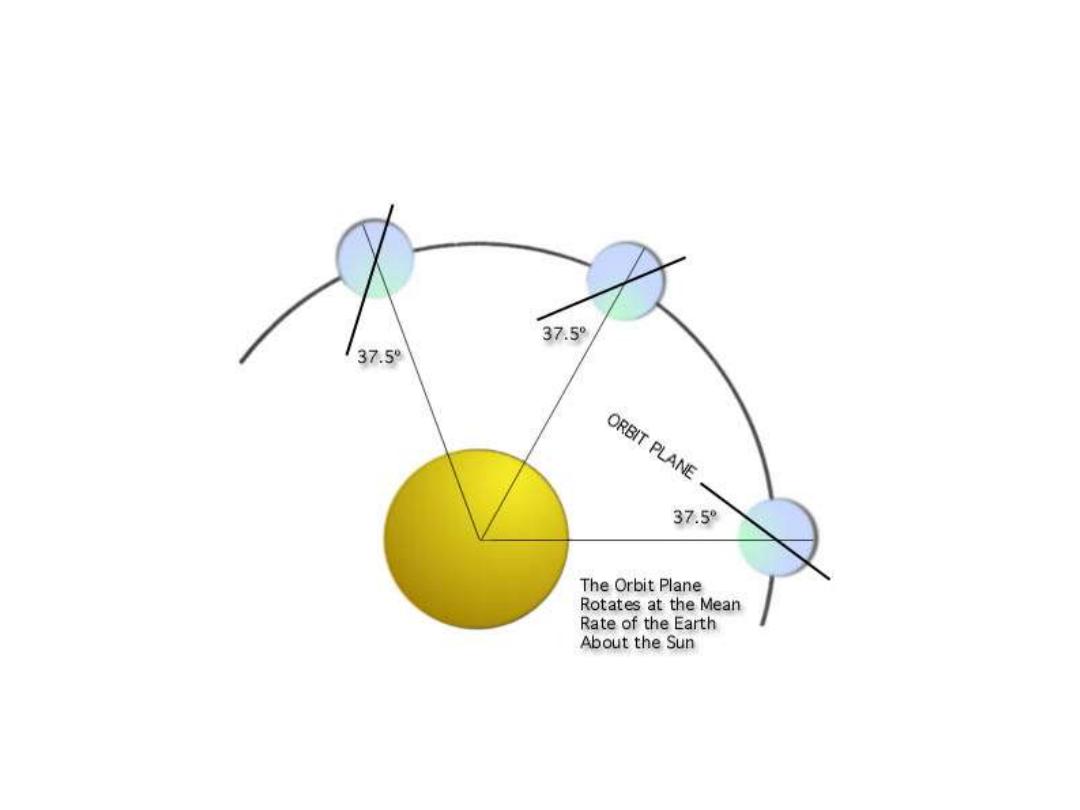
©2008 Austin Troy
Orbits
Source:http://ltpwww.gsfc.nasa.gov/IAS/handbook/handbo
ok_htmls/chapter6/chapter6.html

©2008 Austin Troy
Orbits
•The slow motion of that orbital plane
matches the latitudinal motion of the
sun in the sky over the year
•Maintains similar sun angles along its
ground trace for all orbits
•That means that the area the sun flies
over always get the same sunlight
angle, which gives constant lighting
Source:http://hdsn.eoc.nasda.go.jp/experience/rm_kiso/sat
ellit_type_orbit_e.html
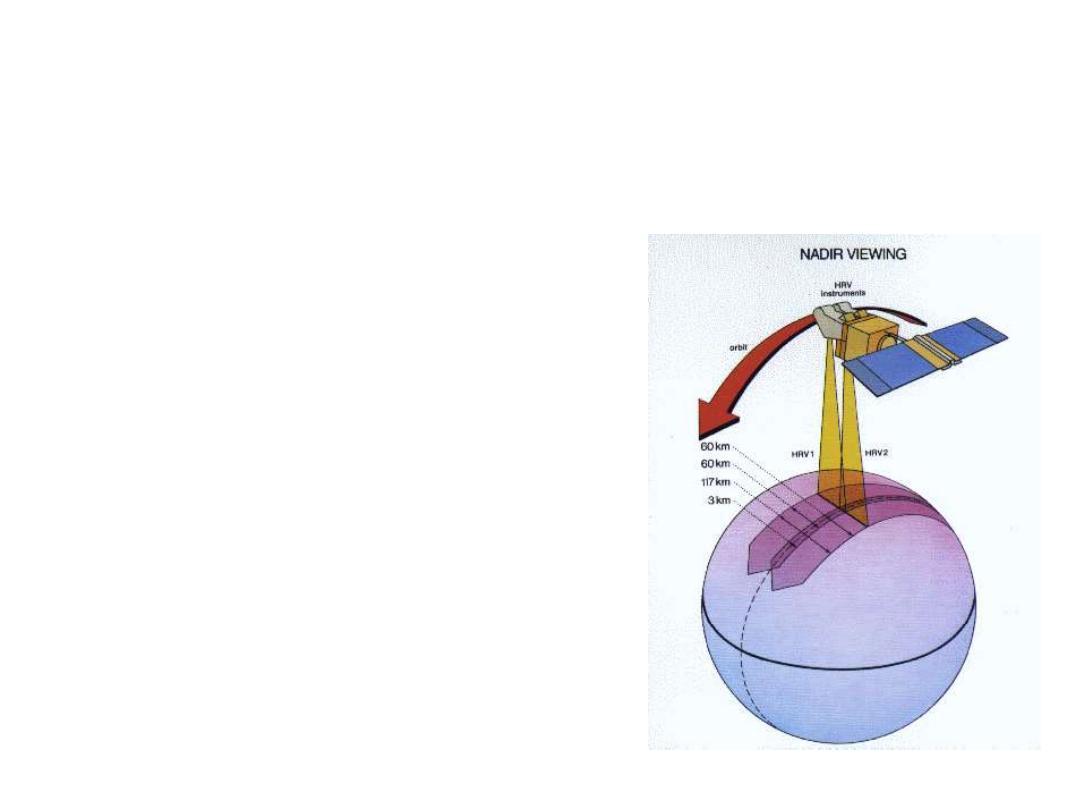
©2008 Austin Troy
Scanners
•Pushbroom (along track) vs.
Whiskbroom (across track)
•SPOT and IKONOS: Pushbroom
•Landsat: Whiskbroom
•Pushbroom scanners generally have
higher radiometric resolution because
they have longer “dwell time” than
across-track scanners, which move
laterally across landscape as also
move forward
Source: http://www.sci-ctr.edu.sg/ssc/publication/remotesense/spot.htm
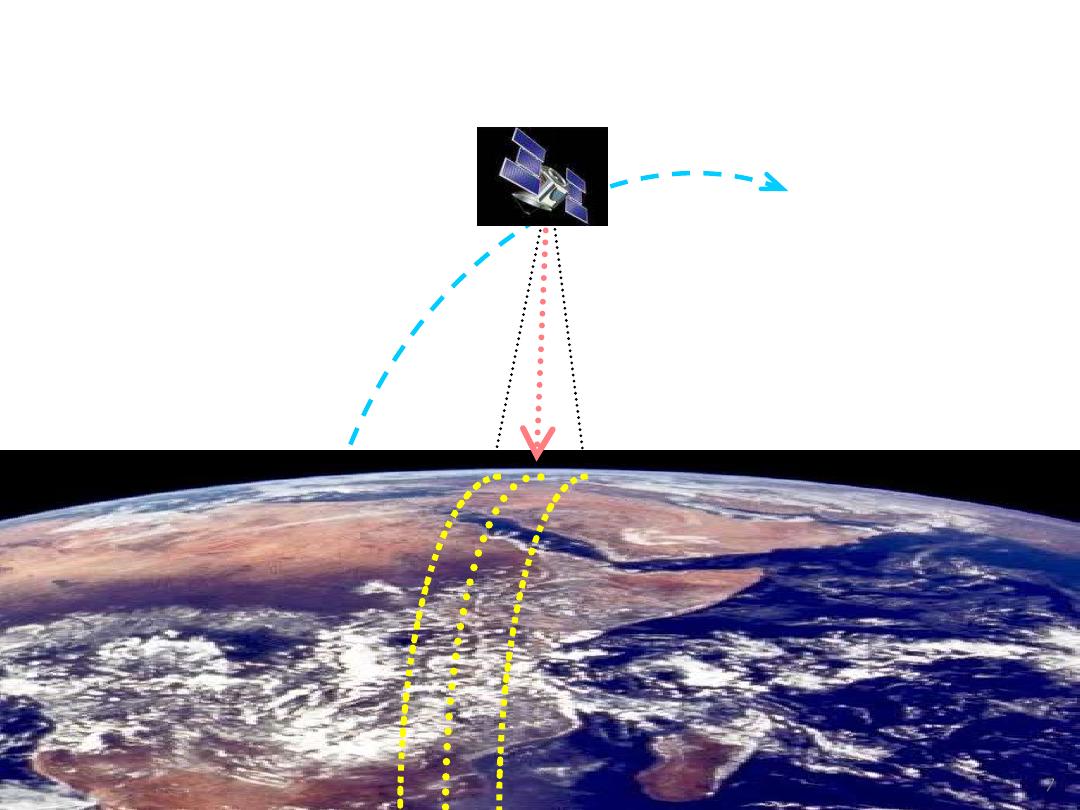
©2008 Austin Troy
7
Direction of Satellite Motion
Active remote
sensing
instruments send
out a signal of
radiation at a
particular
wavelength.
Active Remote Sensing
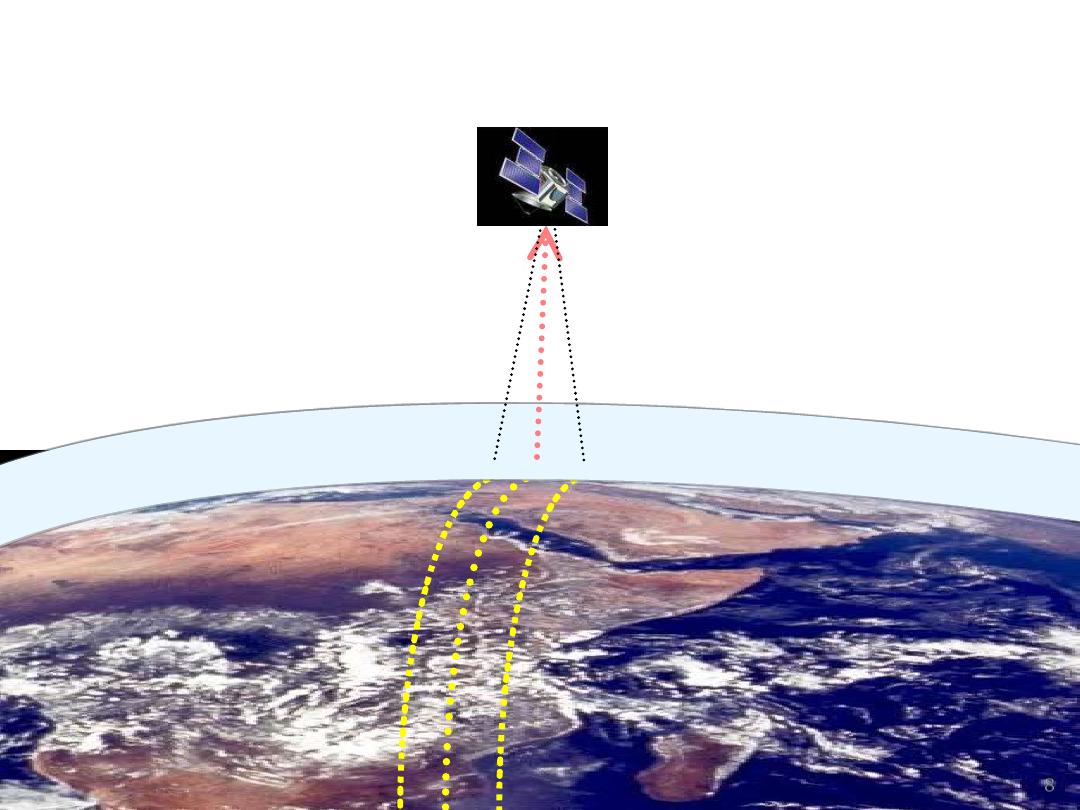
©2008 Austin Troy
8
Active remote sensing
instruments rely upon the
amount or frequency of
radiation reflected back to
the satellite instrument by
the Earth’s surface or
atmosphere.
Active Remote Sensing
Atmosphere
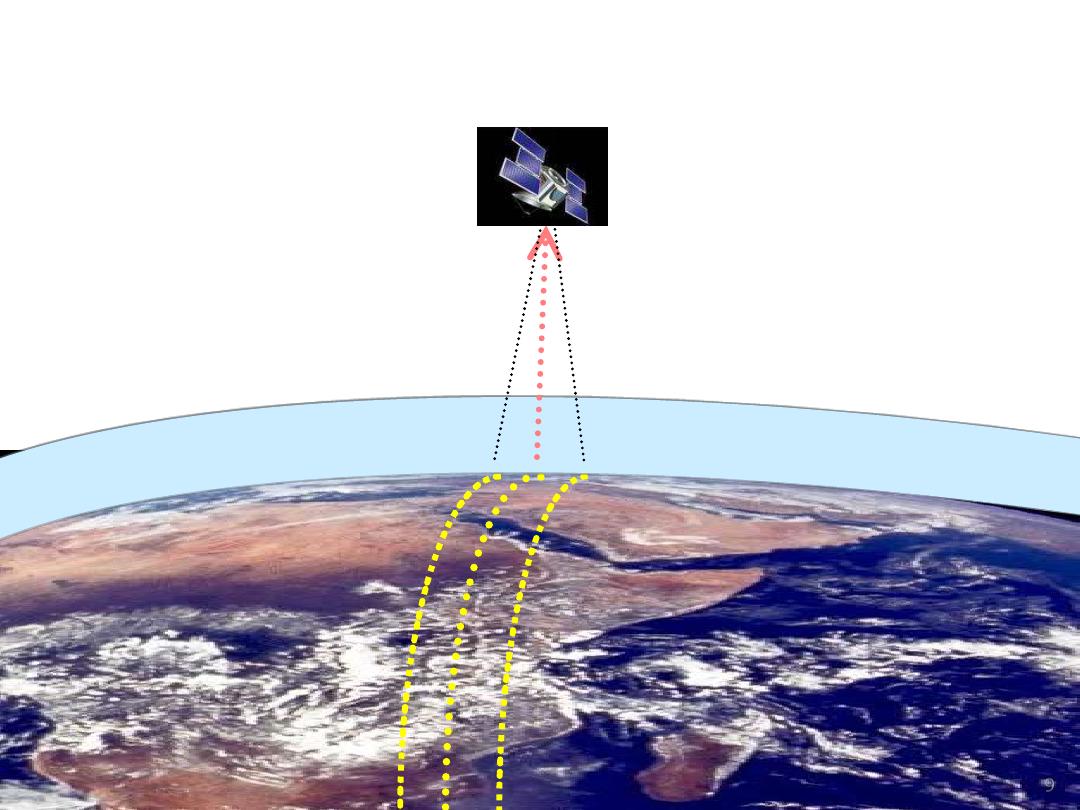
©2008 Austin Troy
9
An example of an active
remote sensing instrument
is the CALIOP (Cloud
Aerosol LIdar with
Orthogonal Polarization)
Active Remote Sensing
Lidar (laser LIght Detection
and Ranging) instrument on
the CALIPSO satellite.
Atmosphere
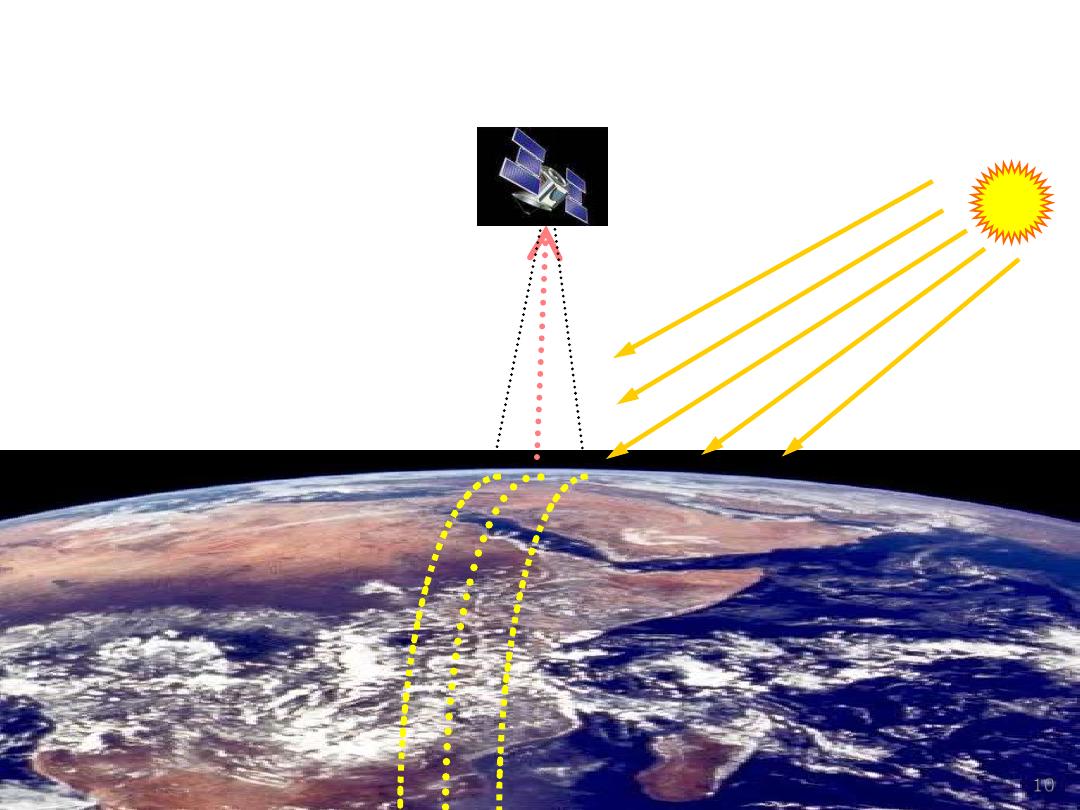
©2008 Austin Troy
10
Passive Remote Sensing
Passive remote
sensing instruments
either use the Sun as
the source of
radiation…
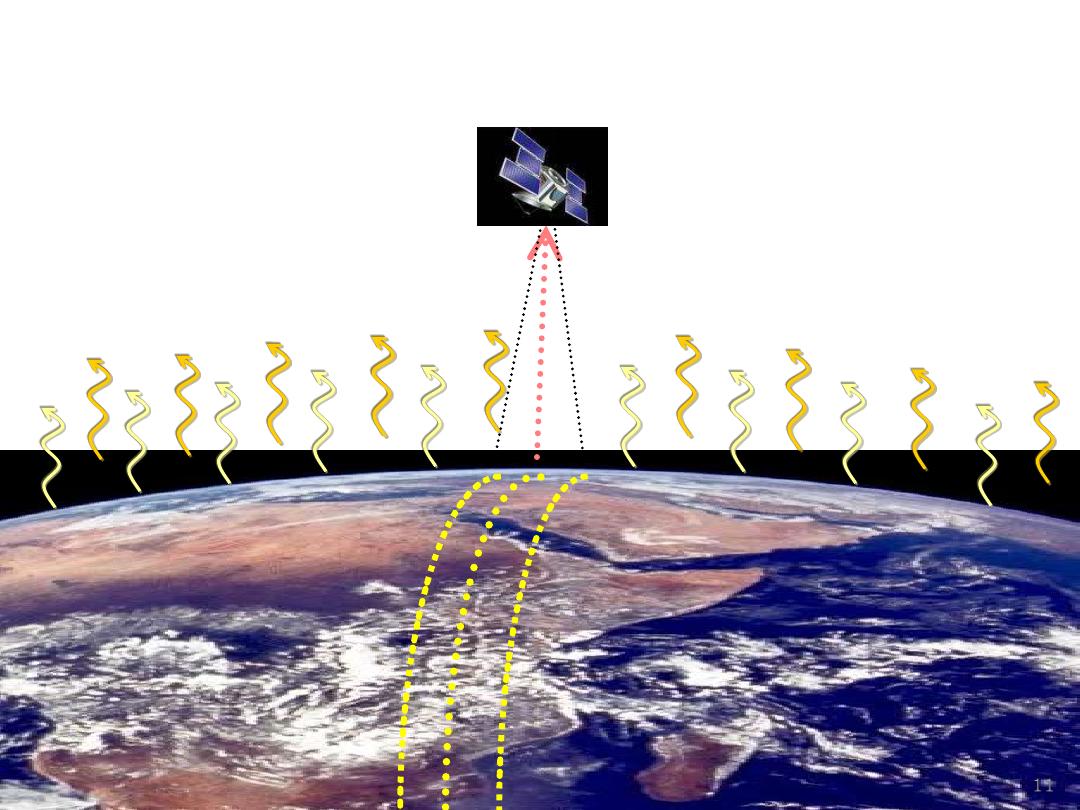
©2008 Austin Troy
11
Passive Remote Sensing
… or use radiation
emitted by the Earth’s
surface or
atmosphere.
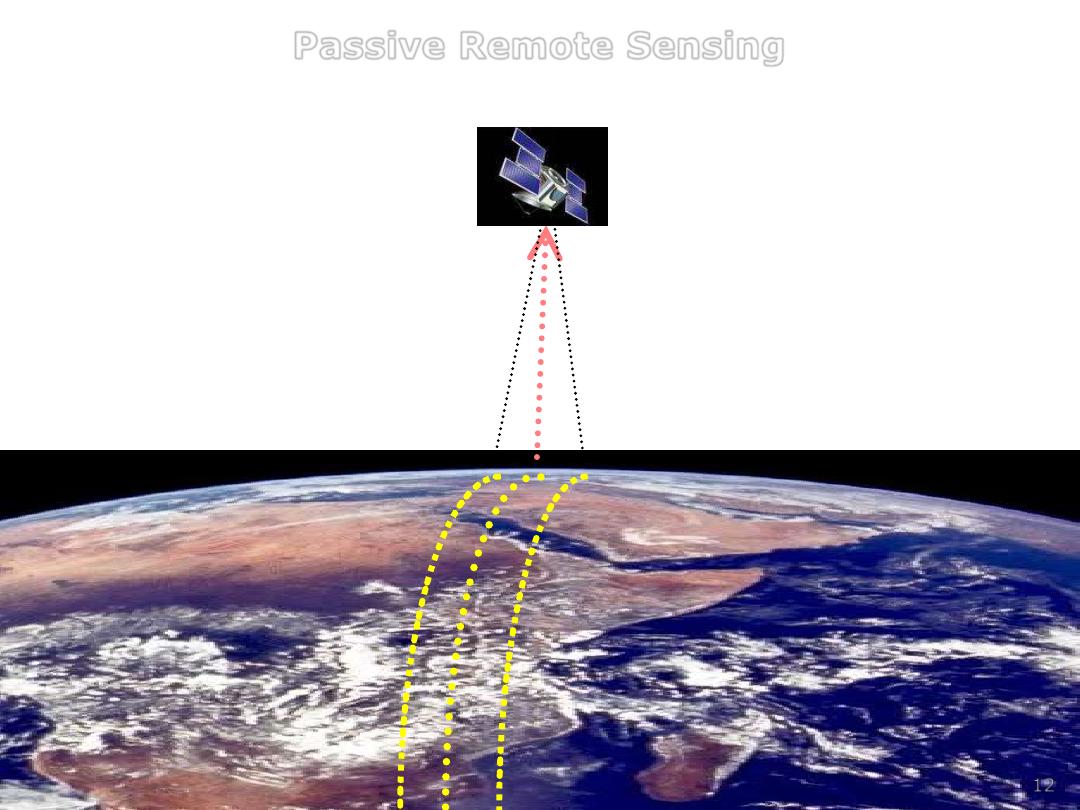
©2008 Austin Troy
12
Passive Remote Sensing
Passive remote sensing
instruments rely upon the
amount or frequency of
radiation received by the
satellite instrument from
the Earth’s surface or
atmosphere.
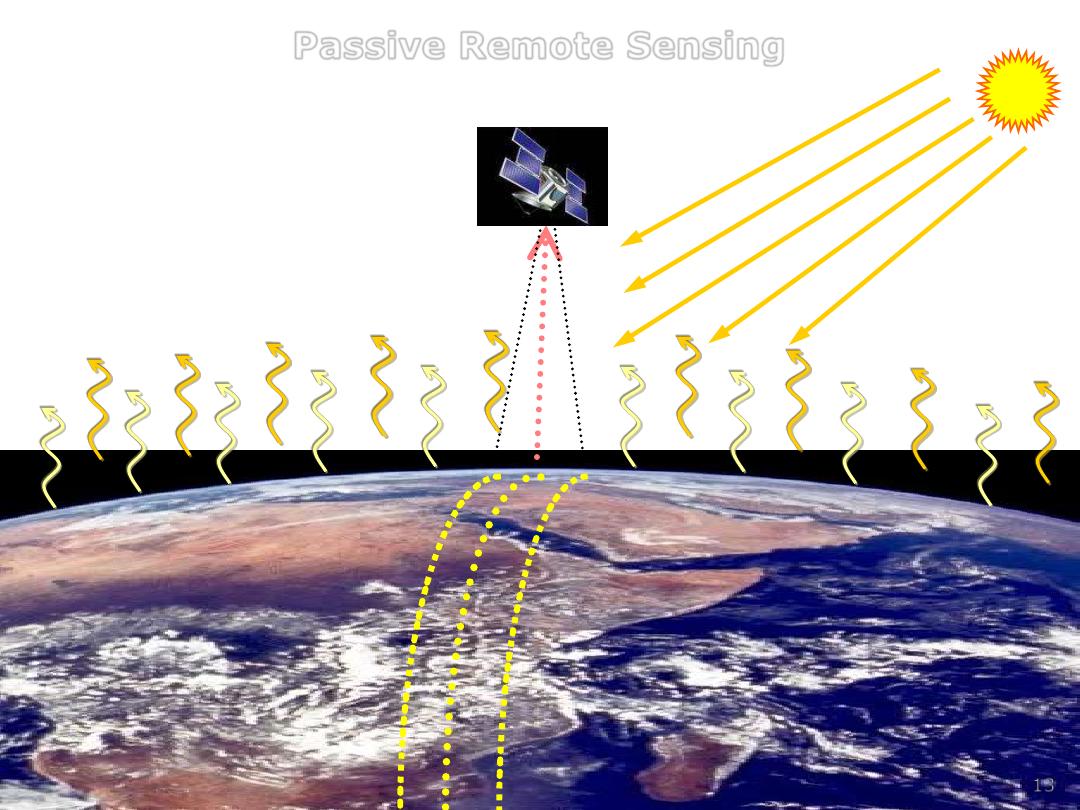
©2008 Austin Troy
13
Passive Remote Sensing
Most satellite remote
sensing instruments
rely on passive
observations.
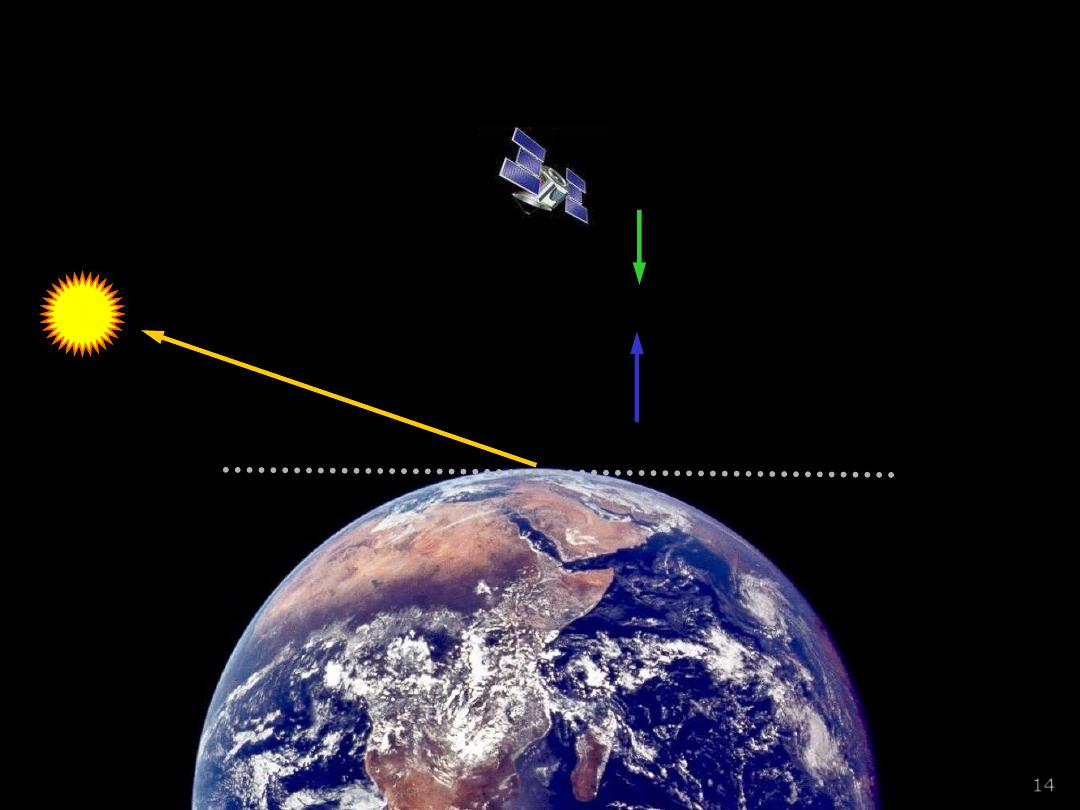
©2008 Austin Troy
Nadir
14
Horizon
Solar
Zenith
Angle
Zenith
Elevation
Angle
Orbital Geometry
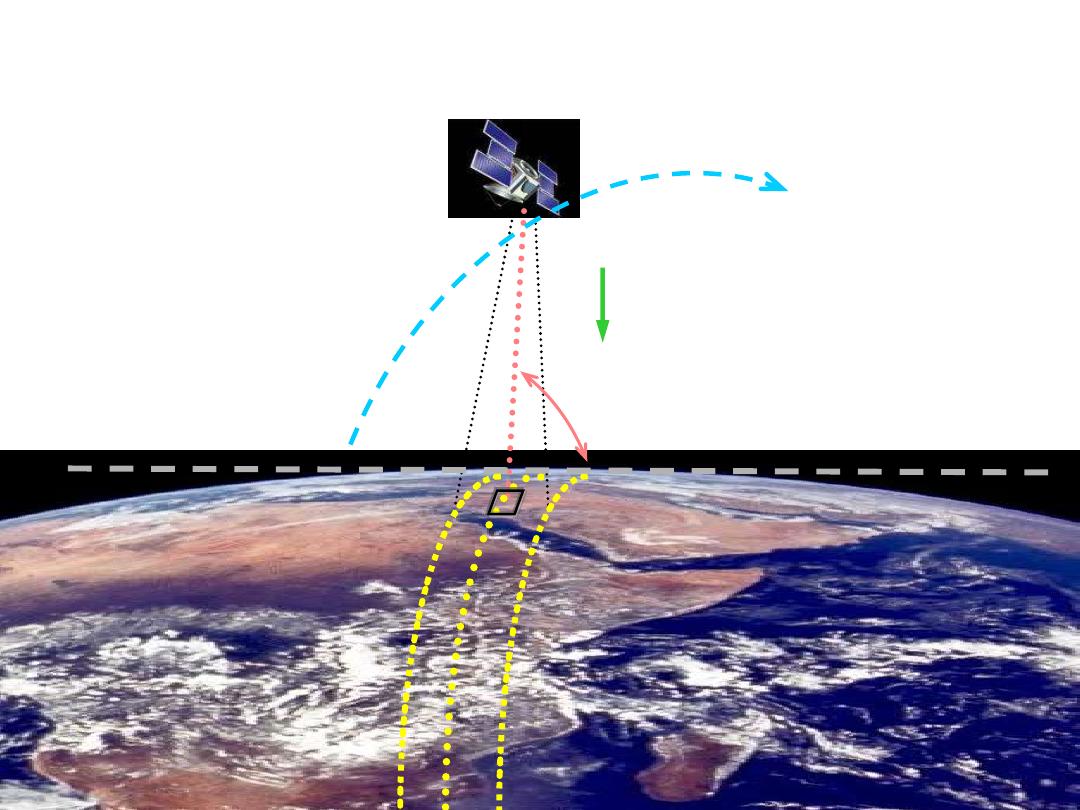
©2008 Austin Troy
15
The nadir FOV is
defined as directly
beneath the satellite
track, when the
satellite is overhead
(90° elevation
angle from the
horizon).
Low Earth Orbit (LEO) FOV
Direction of Satellite Motion
Horizon
Nadir
90°
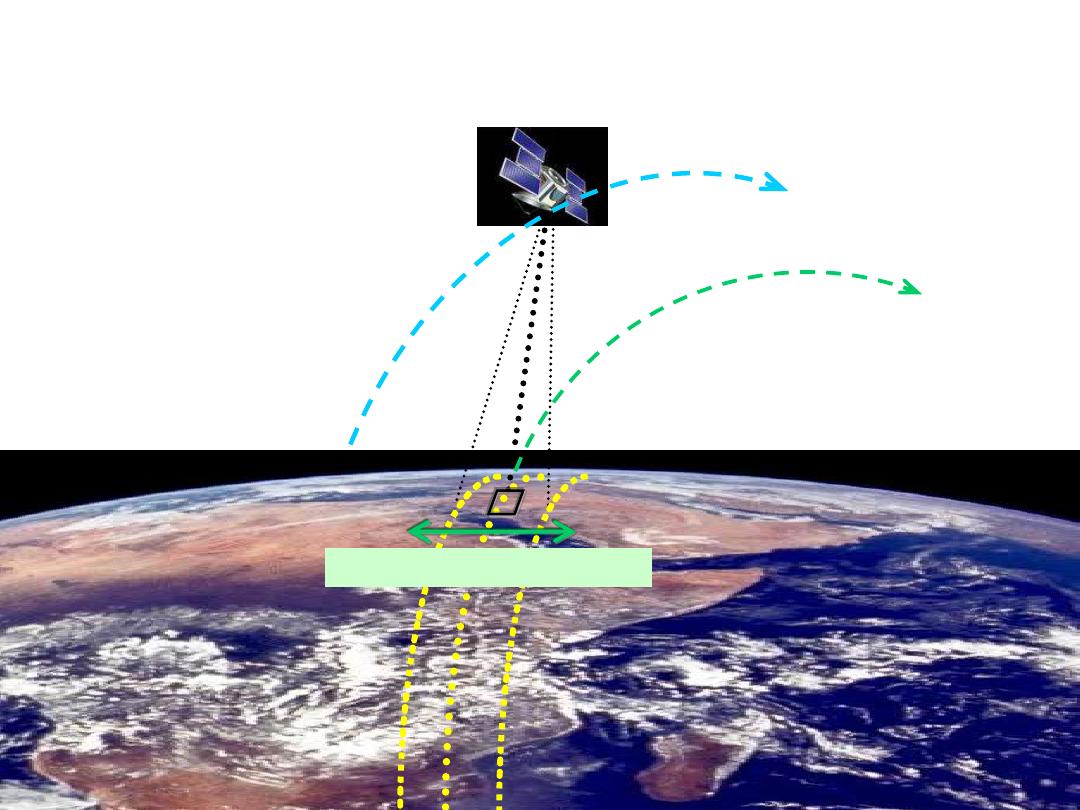
©2008 Austin Troy
16
The orbit is
defined as having
a
cross-track
and an
along-
track
direction.
Low Earth Orbit (LEO) FOV
Direction of Satellite Motion
Along-Track Direction
Cross-Track Direction
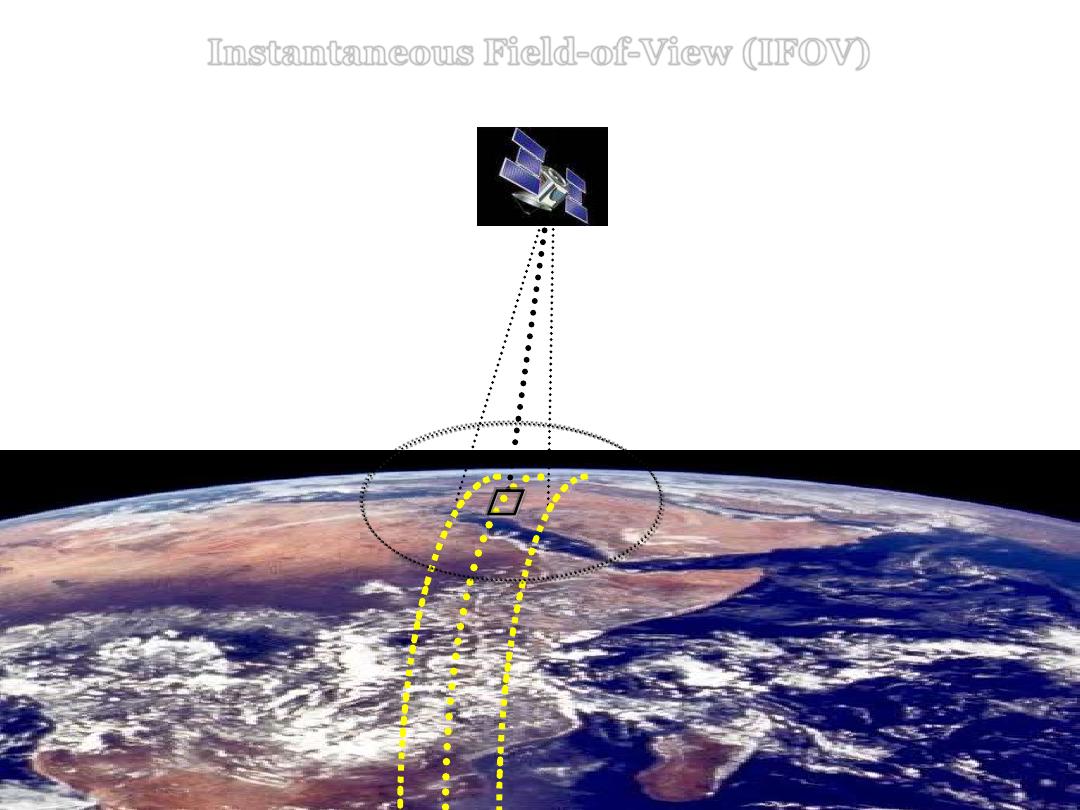
©2008 Austin Troy
17
Instantaneous Field-of-View (IFOV)
The nadir
(downward-looking)
Instantaneous Field-
of-View (IFOV) or
footprint represents
the nadir spatial
resolution.
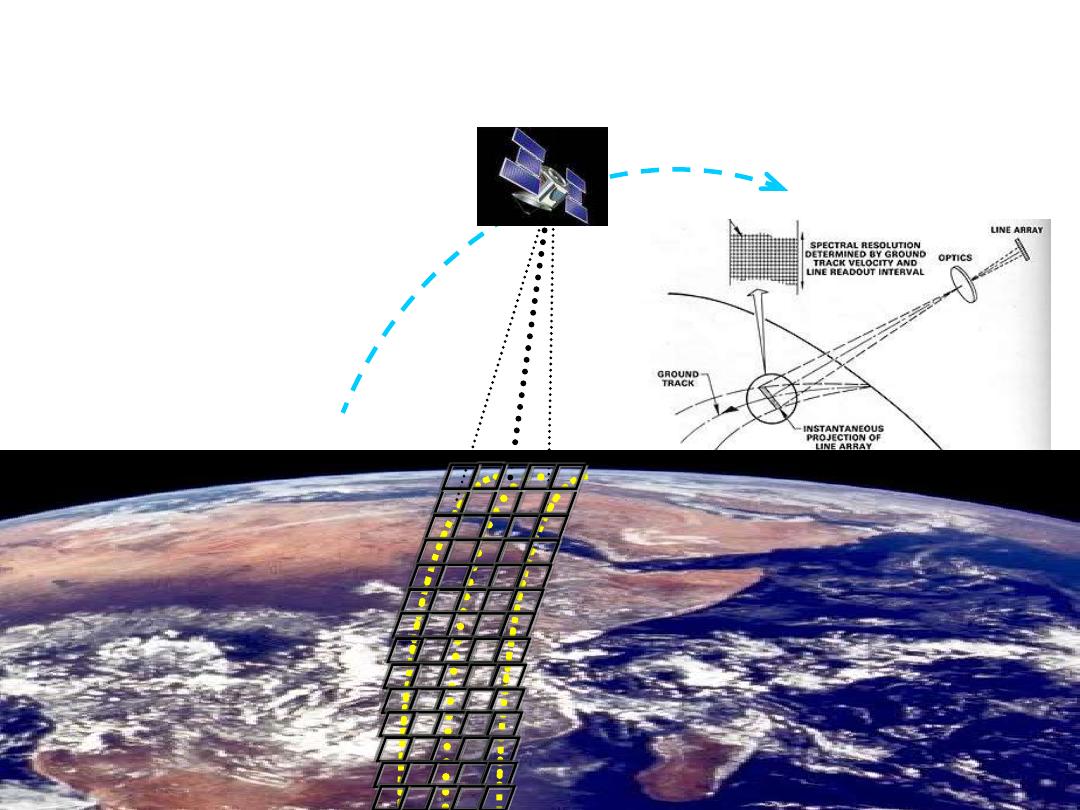
©2008 Austin Troy
18
By stitching together a
continuous series of
push broom images, a
contiguous swath or
ribbon of data
encircling the Earth
can be achieved.
Push-Broom Sensors
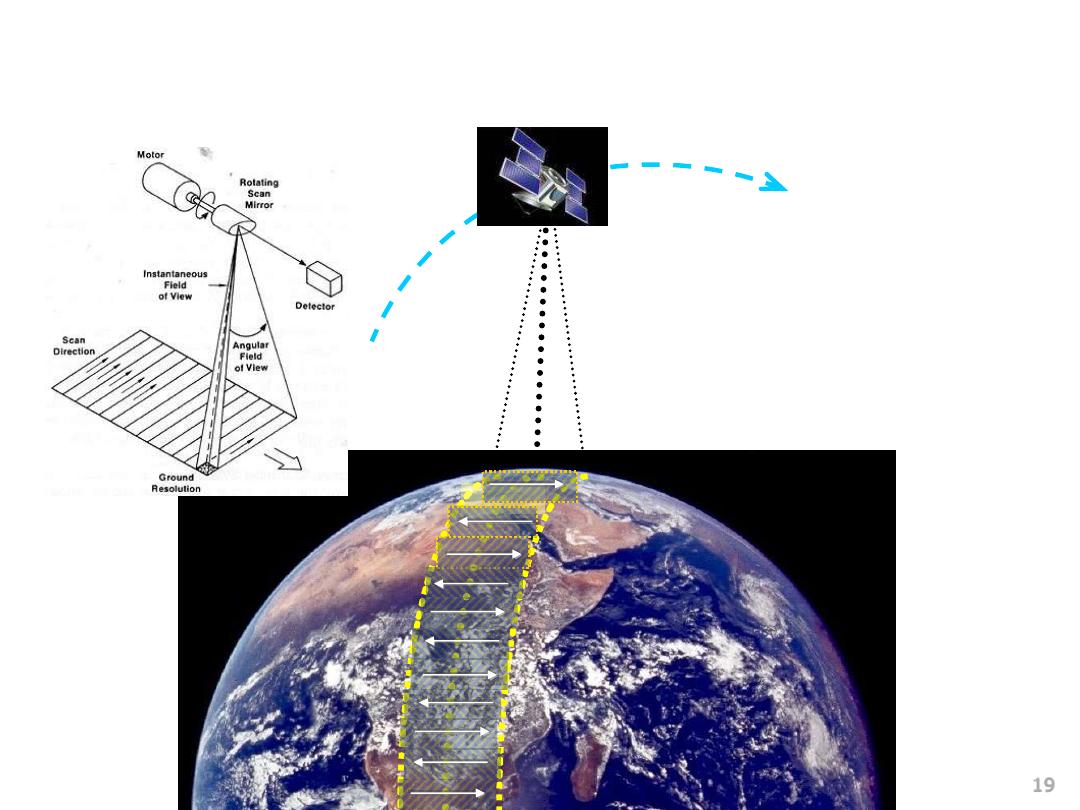
©2008 Austin Troy
19
In “Cross-Track Scanning,” a
scan mirror swings back and
forth along the sub-orbital track,
allowing the sensor to
sequentially observed pixels and
trace out a small swath or ribbon
of the Earth’s surface along the
direction of the satellite’s
motion.
Cross-Track Scanning Sensors
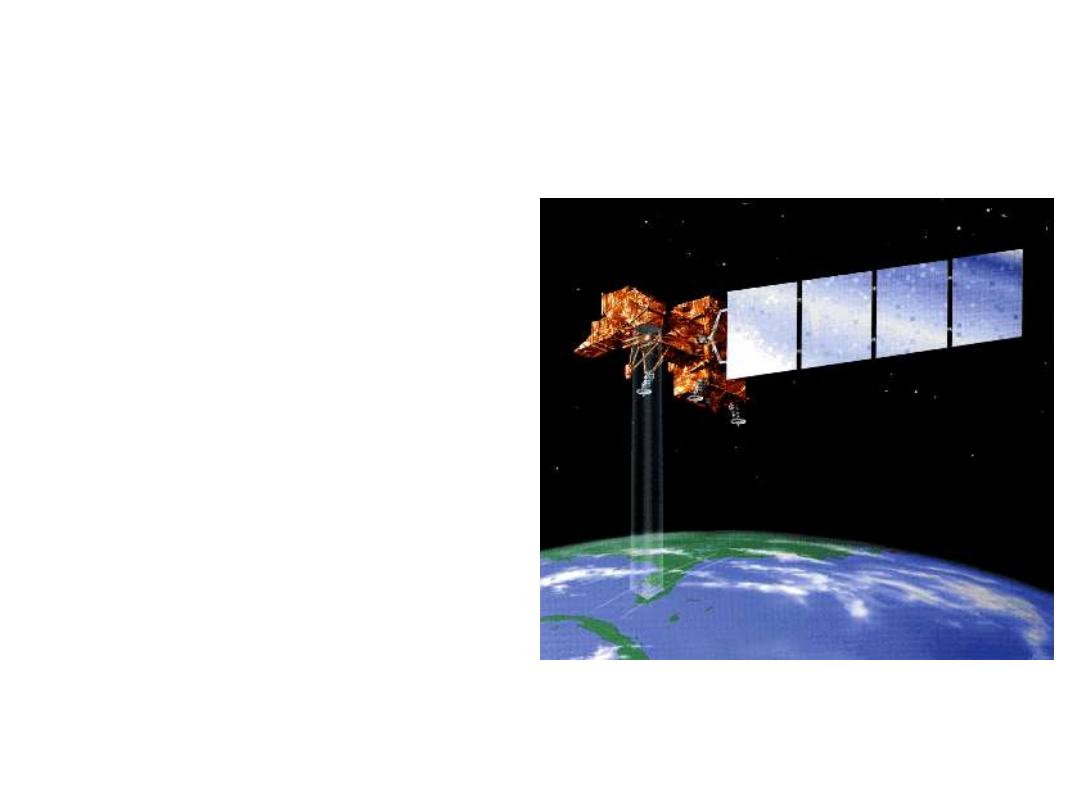
©2008 Austin Troy
LANDSAT
• First started by NASA in
1972 but later turned over to
NOAA
• Since 1984 satellite
operation and data handling
are managed by a commercial
company EOSAT
•LANDSAT-7 launched in
1999; developed scan line
error in 2003
• Only 5 is still working;
outdated
Source: http://www.sci-ctr.edu.sg/ssc/publication/remotesense/landsat.htm

©2008 Austin Troy
LANDSAT
•LANDSAT 4 and 5 had two types of sensors, MSS
(multi-spectral scanner) and TM (thematic mapper):
•MSS:Started on LANDSAT 1, terminated in late
1992. 80 m resolution with four spectral bands from
the visible green to the near-infrared (IR)
wavelengths. Only Landsat 3’s MSS sensor had a
fifth band in the thermal-IR.
Introduction to GIS
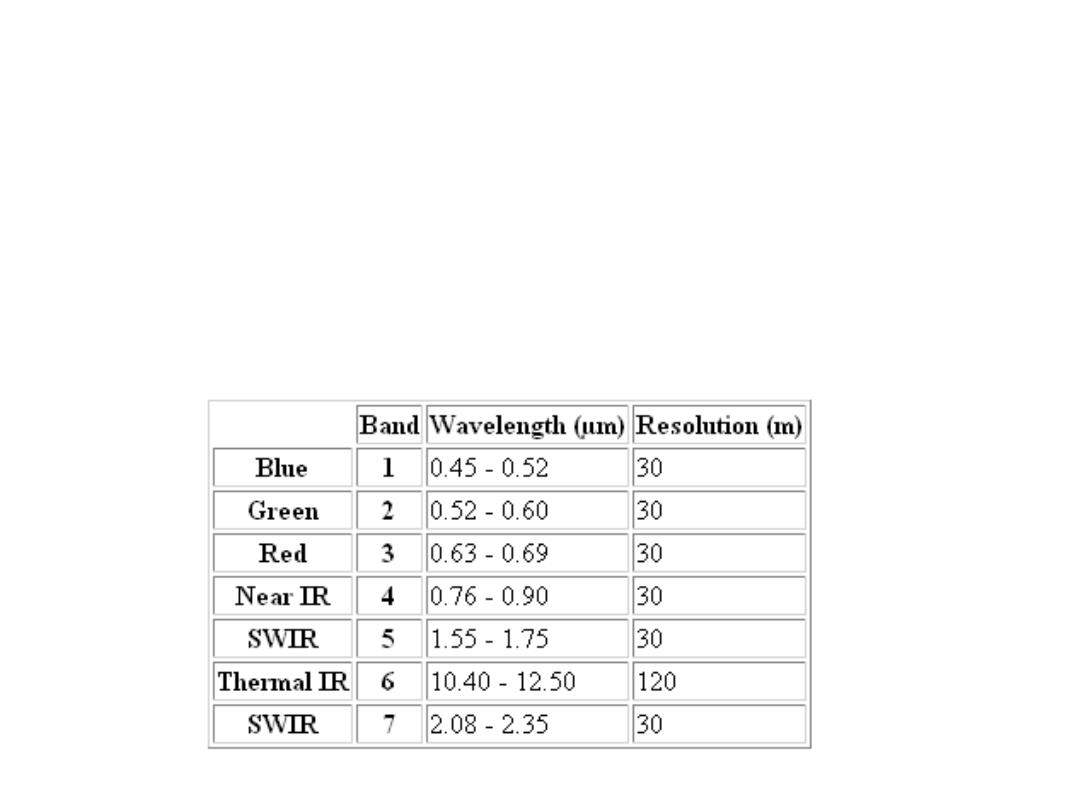
©2008 Austin Troy
LANDSAT Thematic Mapper
*
*
* Mid infra red
•
Spatial and spectral resolution
•
Radiometric resolution: 8 bits (256 DNs)
•
Temporal resolution: 16 days.
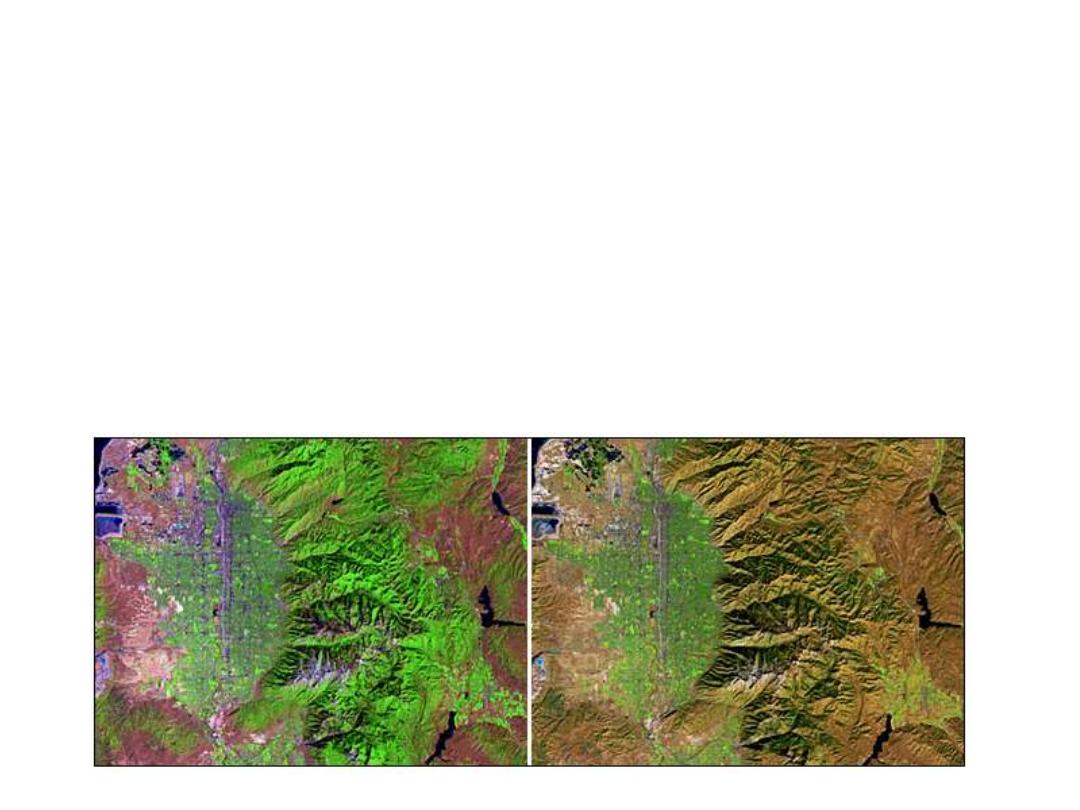
©2008 Austin Troy
LANDSAT TM
•An example:August 14, 1999 (left) and October 17, 1999 (right)
images of the Salt Lake City area
• Differences in color due to growing season
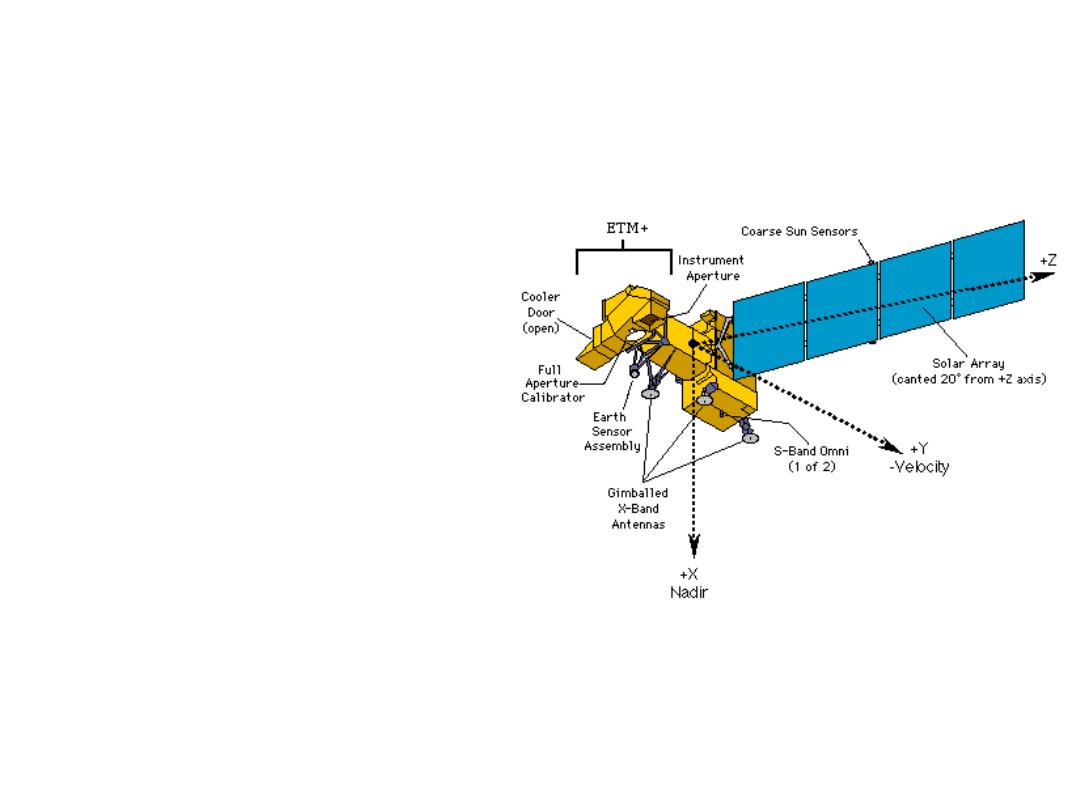
©2008 Austin Troy
LANDSAT 7
•Uses a new sensor called
Enhanced Thematic Mapper
Plus (ETM+)
•Stressed continuity with
LANDSAT 4 and 5 in that
uses similar orbit and repeat
patterns, as well as a similar
185 km swath width for
imaging
Source: http://ltpwww.gsfc.nasa.gov/IAS/handbook/handbook_htmls/chapter2/chapter2.html

©2008 Austin Troy
•
Characteristics of ETM+:
Band wavelength spectrums are
slightly different from LANDSAT 5 TM
LANDSAT-7 ETM+ BAND CHARACTERISTICS
Band
Number
Nominal
spectrum
Spectral Range
(µ)
Ground
Resolution
(m)
Data Lines
Per Scan
Data Line
Length (bytes)
1
Blue
.450 to .515
30
16
6,600
2
green
.525 to .605
30
16
6,600
3
red
.630 to .690
30
16
6,600
4
Near IR
.775 to .900
30
16
6,600
5
mid IR
1.550 to 1.750
30
16
6,600
6
Thermal IR
10.40 to 12.50
60
8
3,300
7
mid IR
2.090 to 2.35
30
16
6,600
8
panchromatic
.520 to .900
15
32
13,200
Enhanced Thematic Mapper Plus

©2008 Austin Troy
LANDSAT TM: applications
Introduction to GIS
Band
Nominal Spectral
location
applications
1
Blue
Water body penetration, soil-water discrimination,
forest type mapping, cultural feature ID
2
Green
Green reflectance peak of veg, for veg ID and
assessment of vigor, cultural feature ID
3
Red
Chlorophyll absorption region, plant species
differentiation, cultural feature ID
4
Near infra red
Veg types, vigor and biomass content, dilineating water
bodies, soil moisture assessment
5
mid infra red (1.55-
1.75
m
m)
Veg moisture, soil moisture, diff of soil from clouds
6
Thermal infra red
Veg stress analysis, soil moisture, thermal mapping
7
mid infra red(2.08-
2.35
m
m)
Discriminating mineral and rock types, veg moisture

©2008 Austin Troy
LANDSAT
•Its repeat cycle is about 16 days and always crosses
equator at around 10 AM.
•Orbit takes about 99 minutes (14.5 per day)
•Distance between ground tracks of consecutive orbits
is 2752 km at equator because of the earth’s rotation
•By following earth’s rotation with each pass, it can
keep crossing the equator at the same time
Introduction to GIS

©2008 Austin Troy
LANDSAT
•Swath is 183 km
wide, although that
includes overlap,
since data frame is
170 km
•233 orbits, for each
16-day cycle
Source: http://eosims.cr.usgs.gov:5725/DATASET_DOCS/landsat7_dataset.html
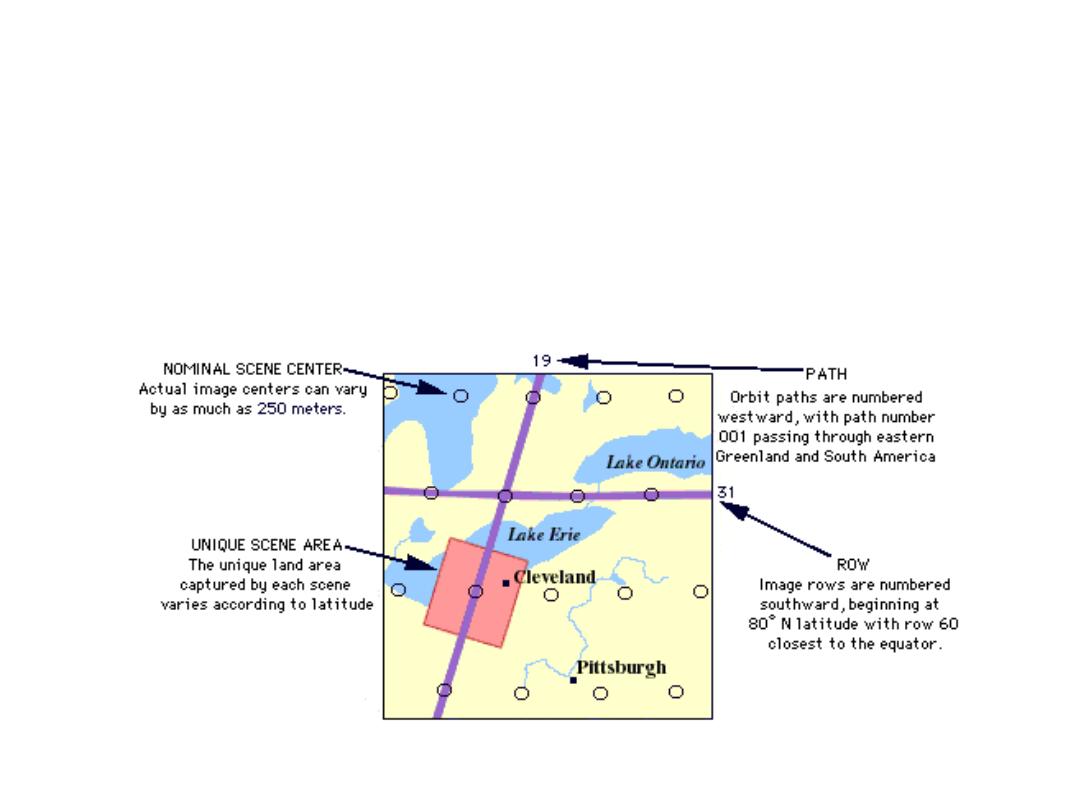
©2008 Austin Troy
LANDSAT
•Scenes are then indexed by the path and a row
Source: http://eosims.cr.usgs.gov:5725/DATASET_DOCS/landsat7_dataset.html
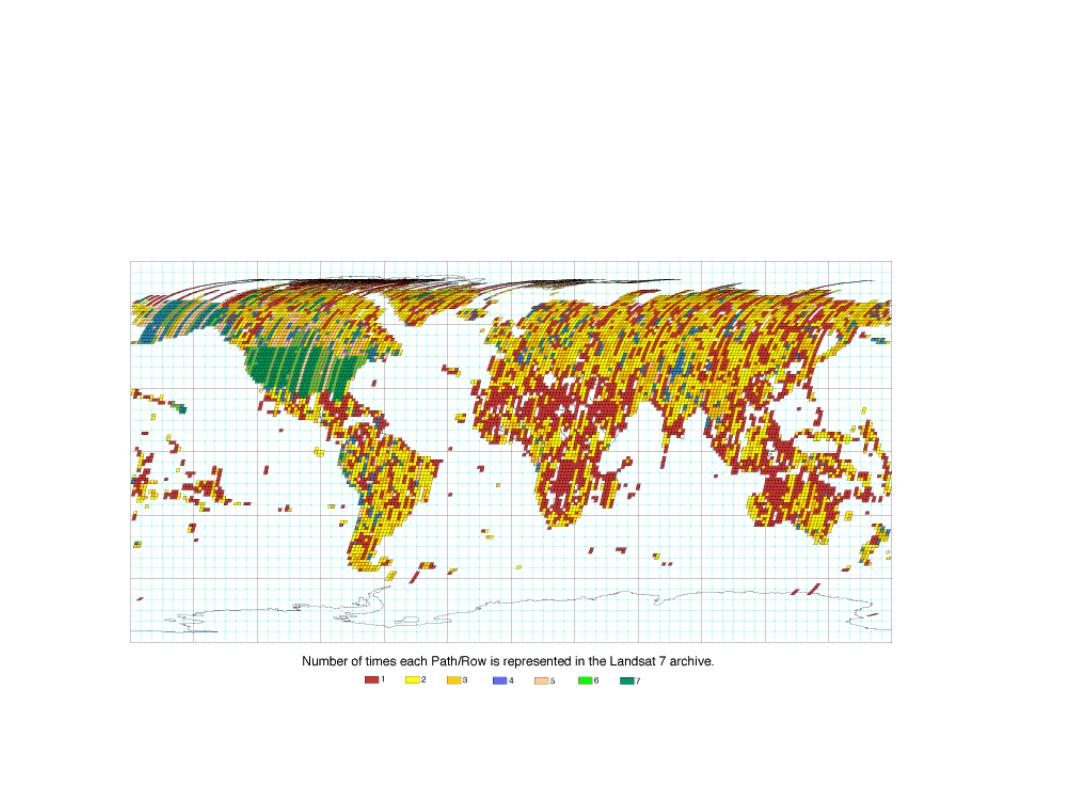
©2008 Austin Troy
LANDSAT 7
• LANDSAT 7 has an excellent mission coverage archive
Source: http://ltpwww.gsfc.nasa.gov/IAS/handbook/handbook_htmls/chapter6/chapter6.html

©2008 Austin Troy
LANDSAT Products
•All data older than 2 years return to "public domain" and
are distributed by the Earth Resource Observation System
(EROS) Data Center of the US Geological Survey
•Available at
http://edcwww.cr.usgs.gov/products/satellite/landsat7.html
•The LANDSAT Reference system catalogues the world
into 57,784 scenes, each 115 miles (183 kilometers) wide
by 106 miles (170 kilometers) long.
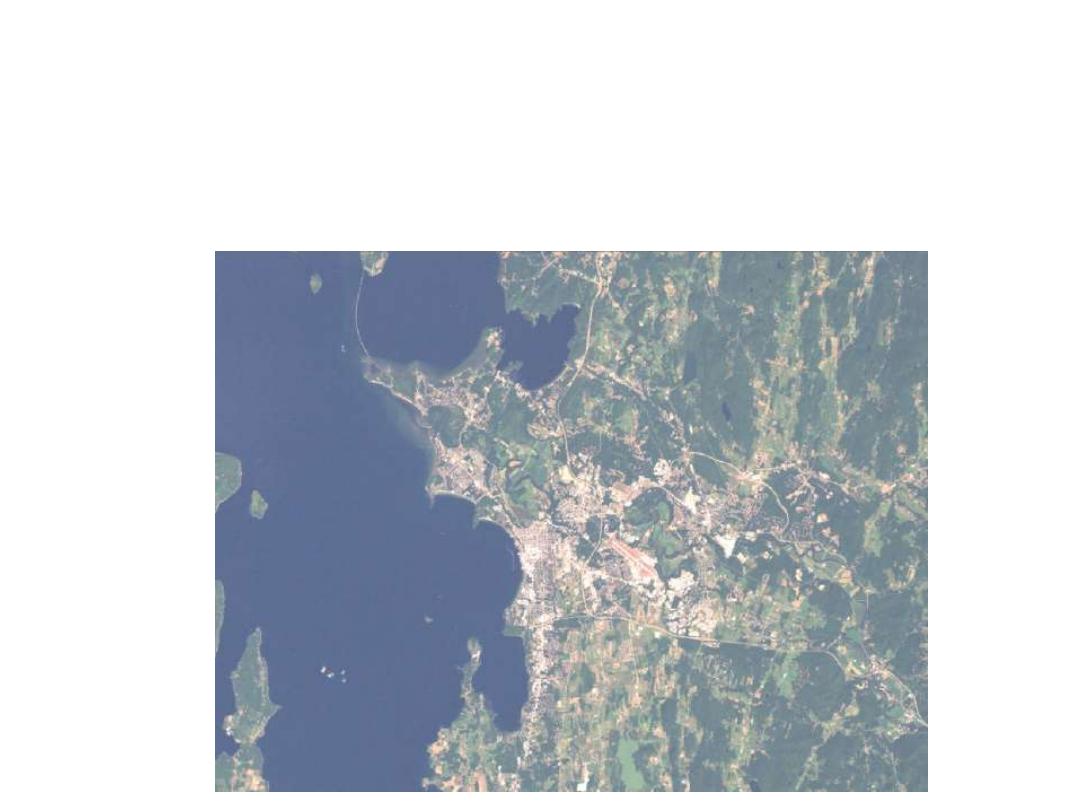
©2008 Austin Troy
LANDSAT Imagery
•
Composite of Red, Green and Blue. Shows manmade features as well as densely
forested areas and agricultural lands.
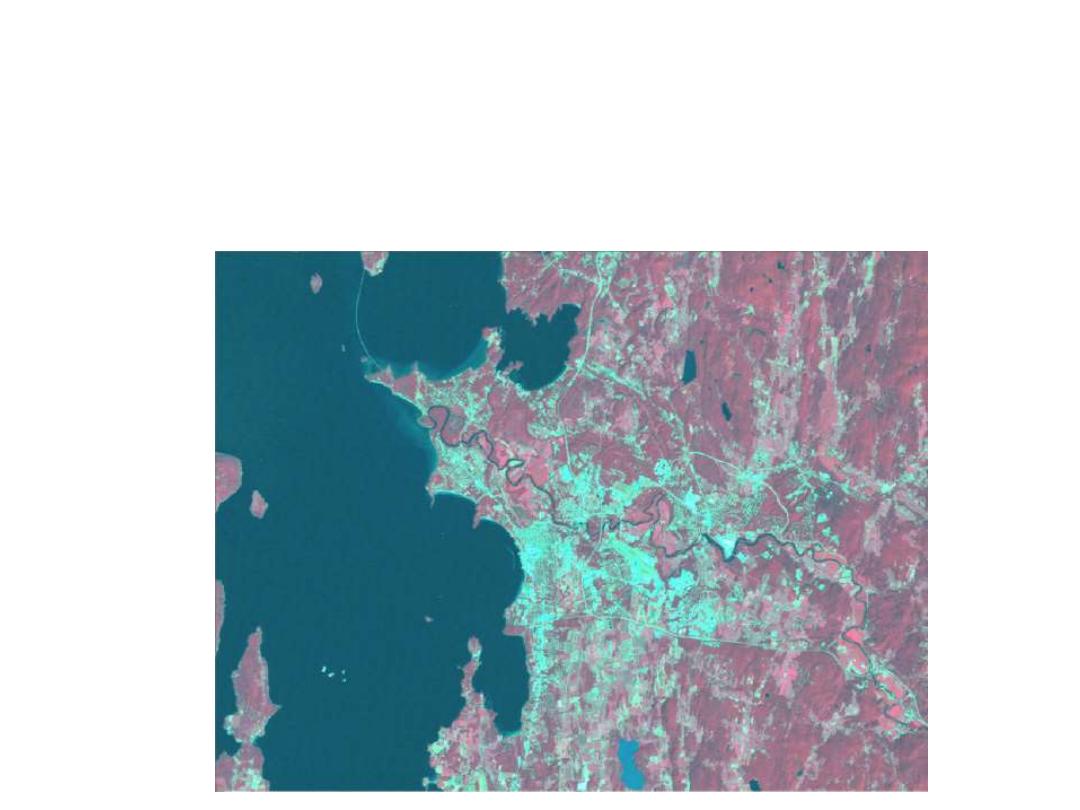
©2008 Austin Troy
Materials by Austin
Troy and Weiqi Zhou
except where noted ©
LANDSAT Imagery
•
Composite of NIR, Red and Green. Shows manmade features as well as densely
forested areas and agricultural lands.
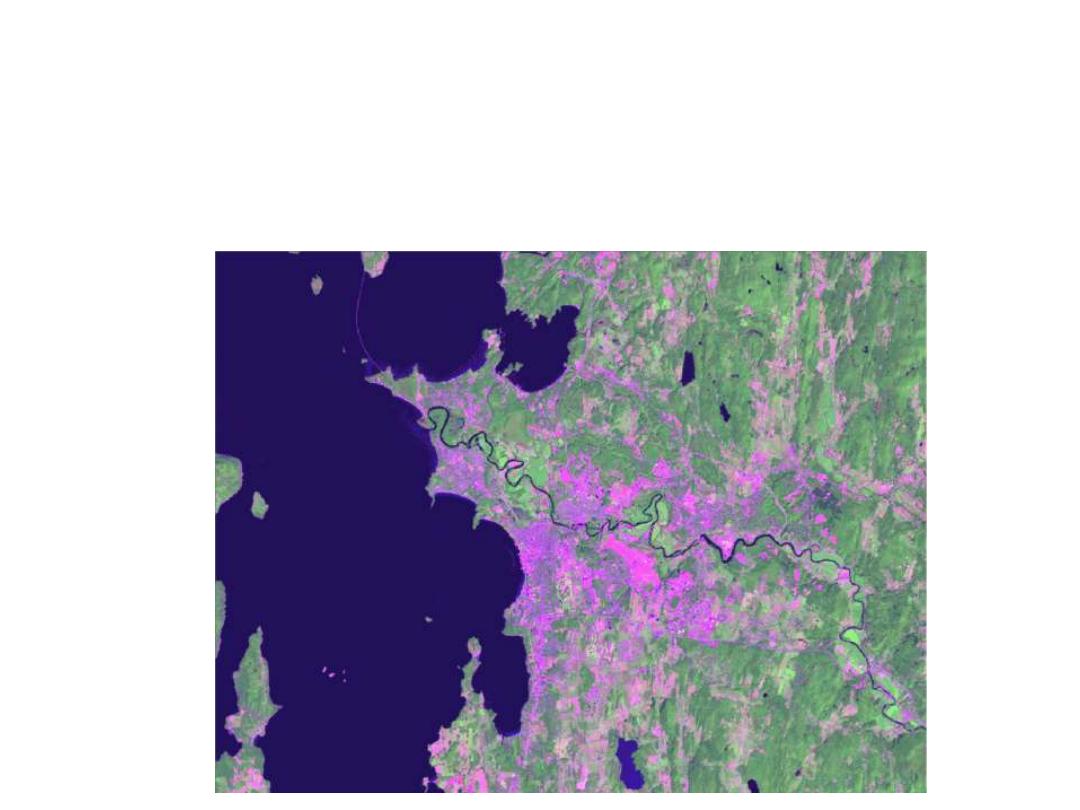
©2008 Austin Troy
LANDSAT Imagery
•
Composite of shortwave infrared, Near-Infrared and Red. Shows manmade
features as well as densely forested areas and agricultural lands
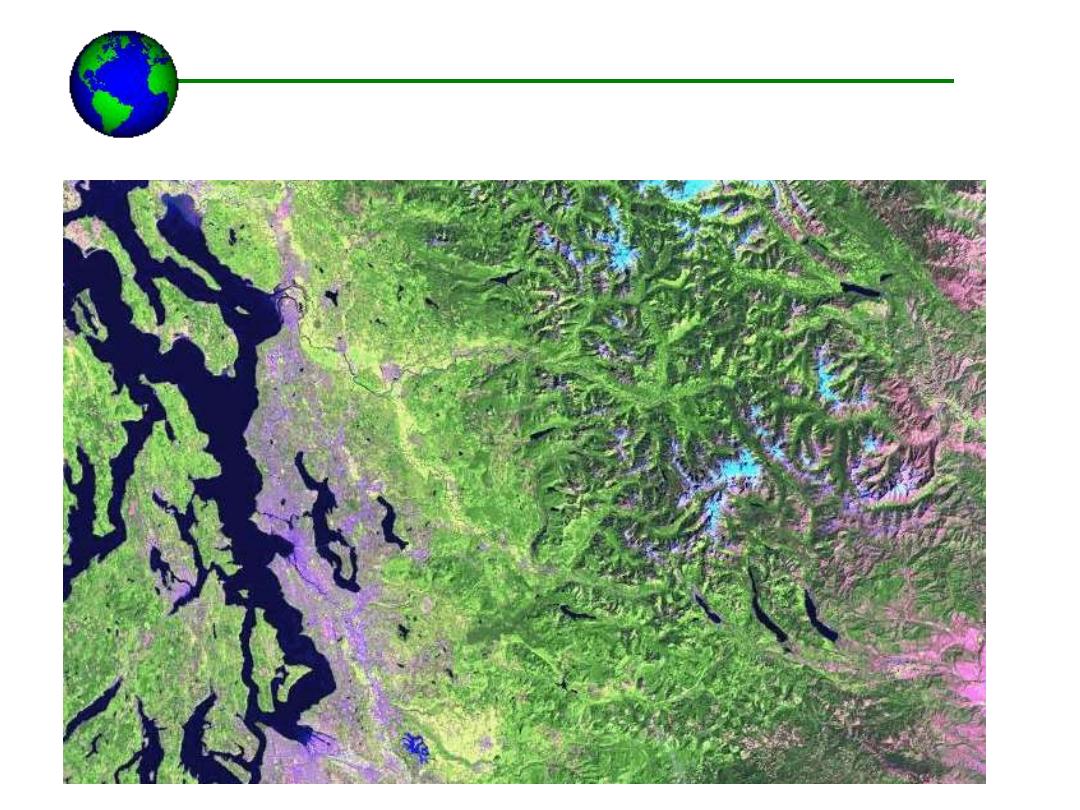
©2008 Austin Troy
LANDSAT Imagery
Introduction to GIS
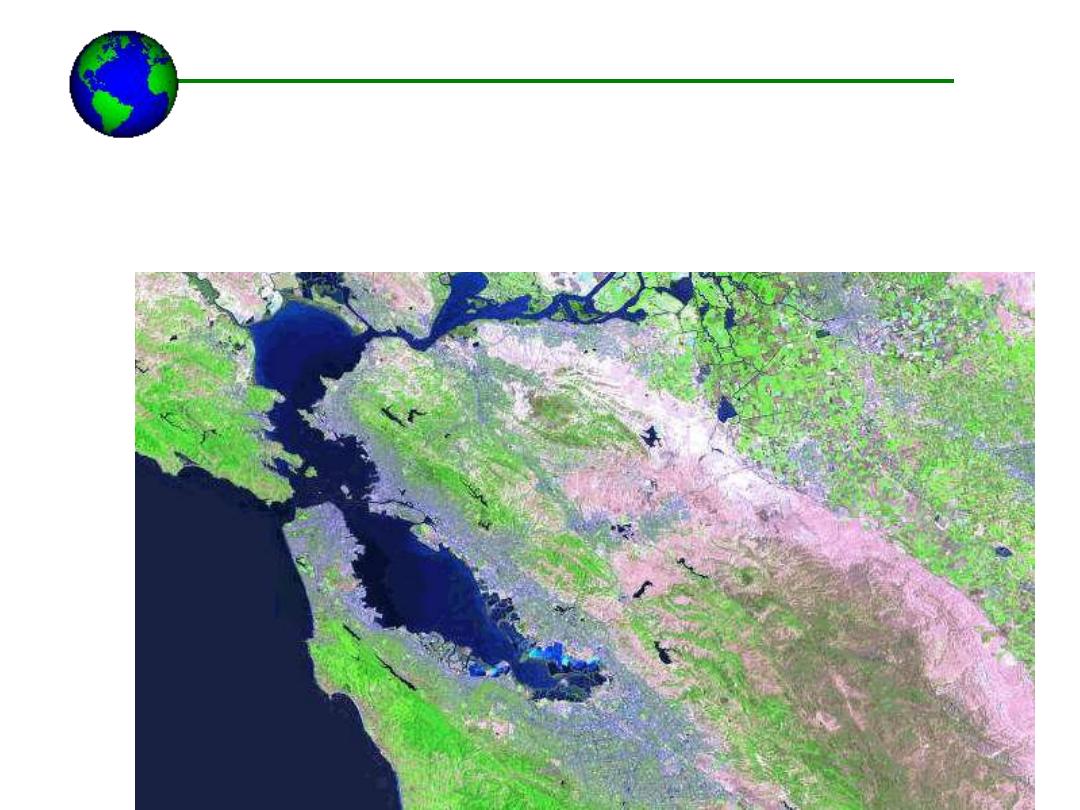
©2008 Austin Troy
Materials by Austin
Troy and Weiqi Zhou
except where noted ©
LANDSAT Imagery
Introduction to GIS
Composite of shortwave infrared, Near-Infrared and Red. Shows manmade features as
well as densely forested areas and agricultural lands
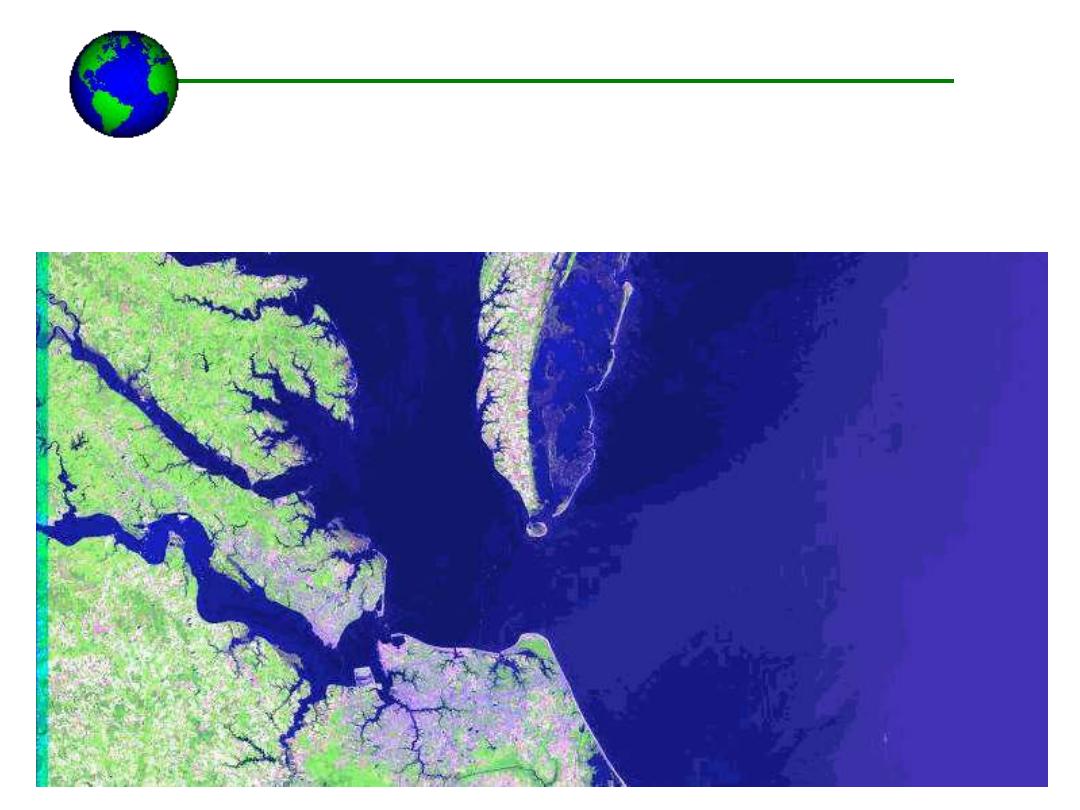
©2008 Austin Troy
LANDSAT Imagery
Introduction to GIS
Same bands: shows wetlands, urban, open water, forest
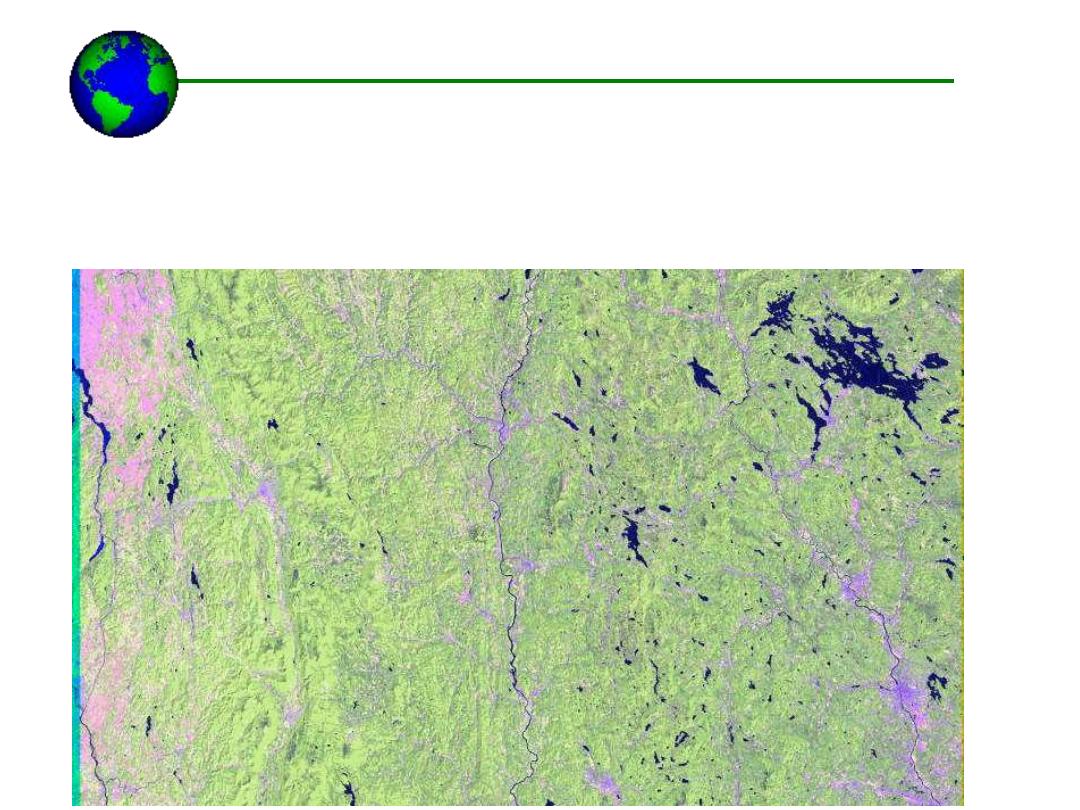
©2008 Austin Troy
LANDSAT Imagery
Introduction to GIS
Same bands: light yellow-green color represents northern hardwood forest. The dark
green patches represent various conifer species
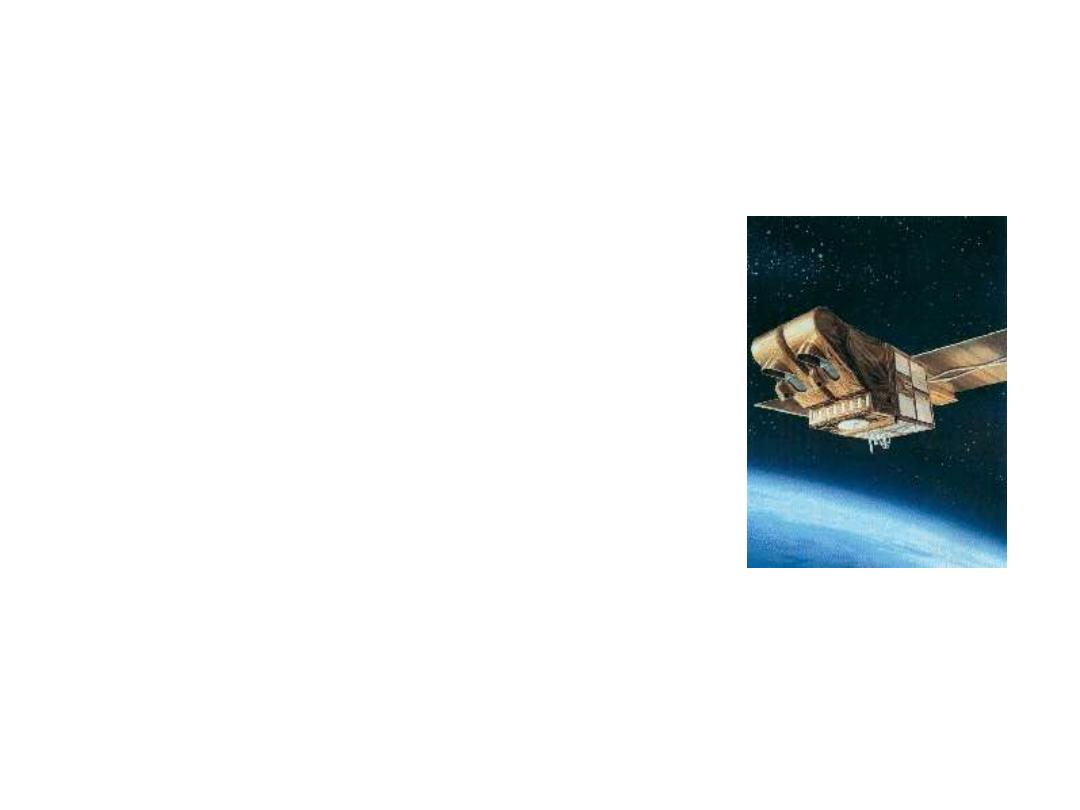
©2008 Austin Troy
SPOT
•Launched by France
• Stands for Satellite Pour
l'Observation de la Terre
•Operated by the French Space
Agency, Centre National d'Etudes
Spatiales (CNES).

©2008 Austin Troy
SPOT
•
SPOT 1 launched 1986, decommissioned and the
reactivated in 1997
•
SPOT 2 launched 1990, still going
•
SPOT 3 launched 1993 and stopped functioning 1996
•
SPOT 4 launched in 1998, still going
•
SPOT 5 launched in 2002
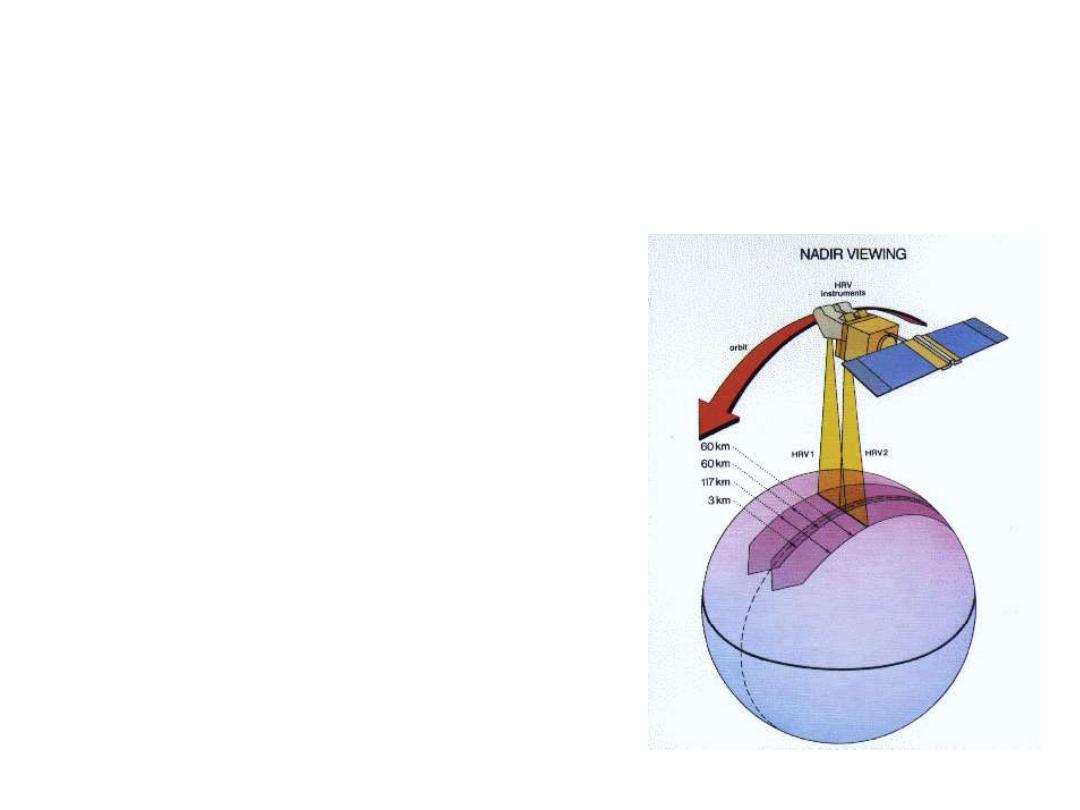
©2008 Austin Troy
SPOT
•
Each SPOT satellite carries two
HRV (high-resolution visible)
sensors, constructed with multilinear
array detectors, or “pushbroom
scanners”
•
These record multispectral image
data along a wide swath
Source: http://www.sci-ctr.edu.sg/ssc/publication/remotesense/spot.htm
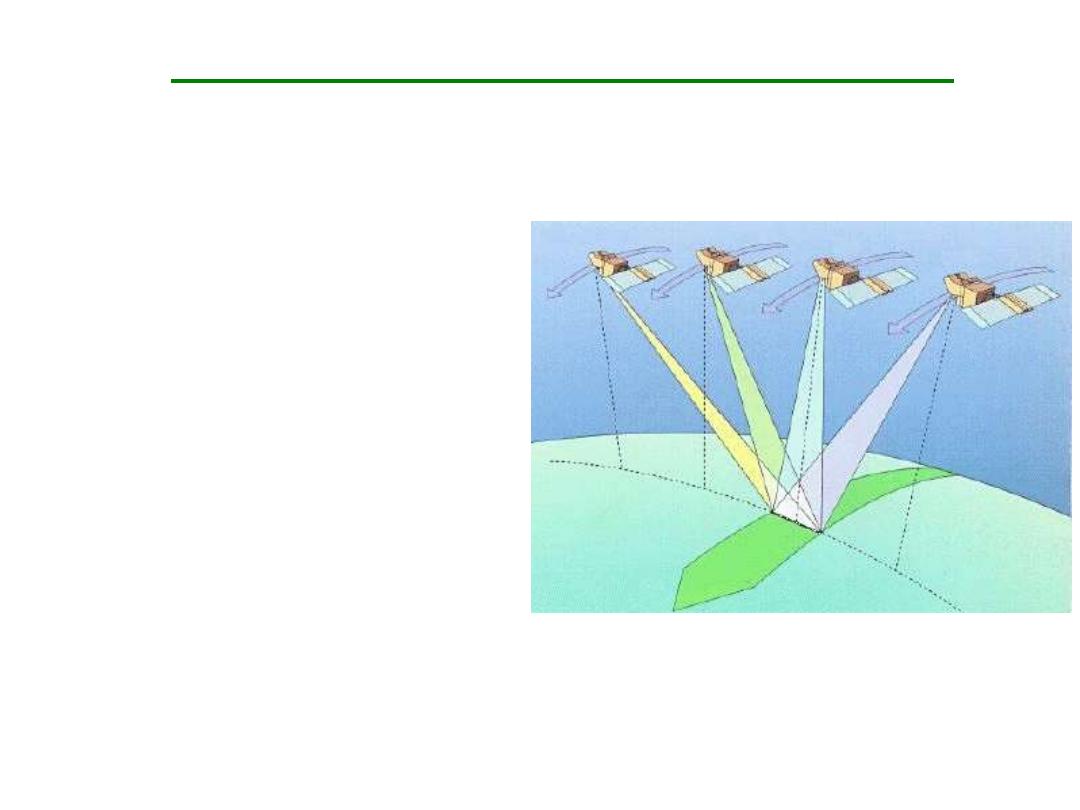
©2008 Austin Troy
SPOT
• The position of each HRV
unit can be changed by ground
control to observe a region of
interest that is at an oblique
angle to the satellite—up to
±27º relative to the vertical.
• Off-nadir viewing allows for
acquisition of stereoscopic
imagery (because of the
parallax created) and provides
a shorter revisit interval of 1 to
3 days.
Source: http://www.sci-ctr.edu.sg/ssc/publication/remotesense/spot.htm

©2008 Austin Troy
SPOT
•
Oblique viewing capacity
– Greatly improve the viewing frequency (temporal
resolution): allows it to image any area within a 900
kilometer swath; can be used to increase the viewing
frequency for a given point during a given cycle. For a
given location, the interval ranges from a maximum of 4
days to a minimum of 1 day.
– Any point on 95% of the earth may be imaged any day
by one of the three satellites.
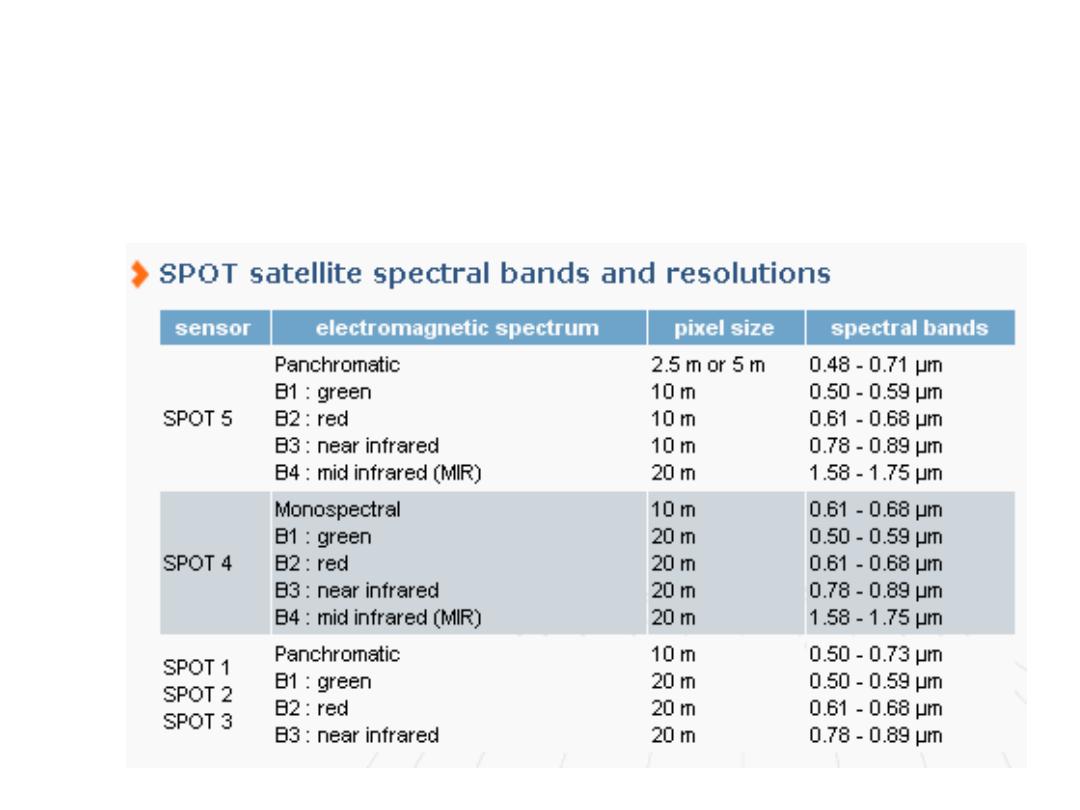
©2008 Austin Troy
SPOT
•
Two modes: panchromatic and multispectral
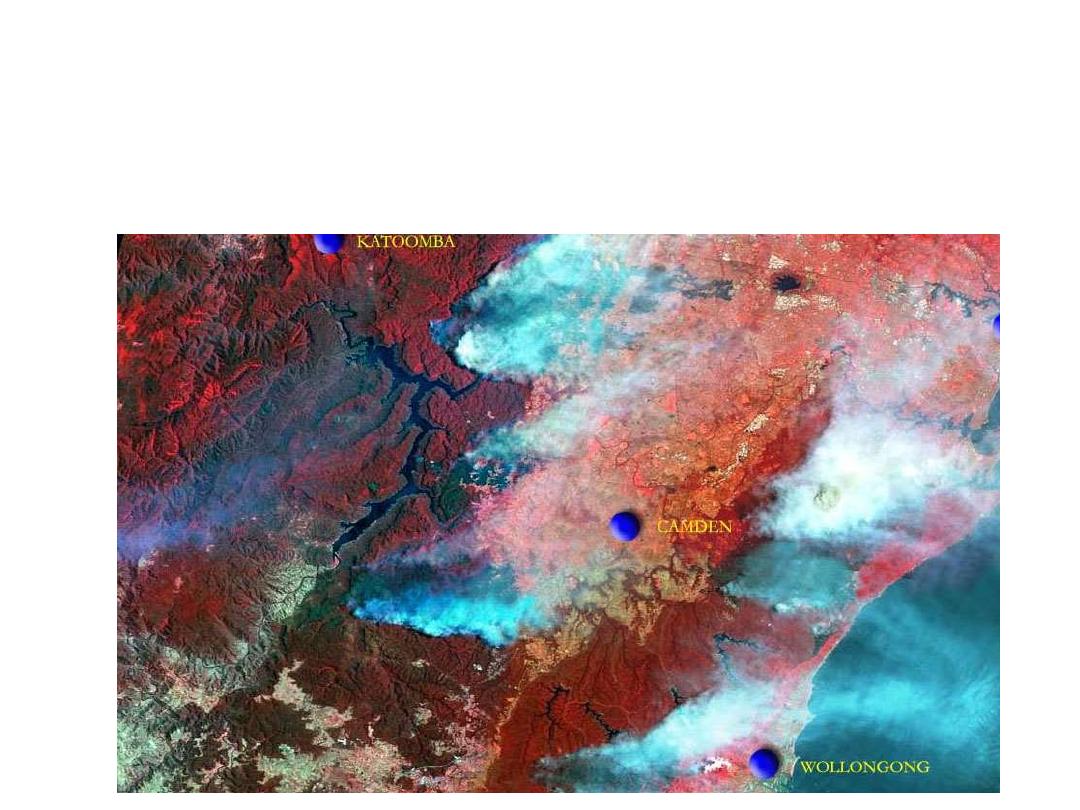
©2008 Austin Troy
SPOT
•Some examples: mosaic false color tiles of Australia
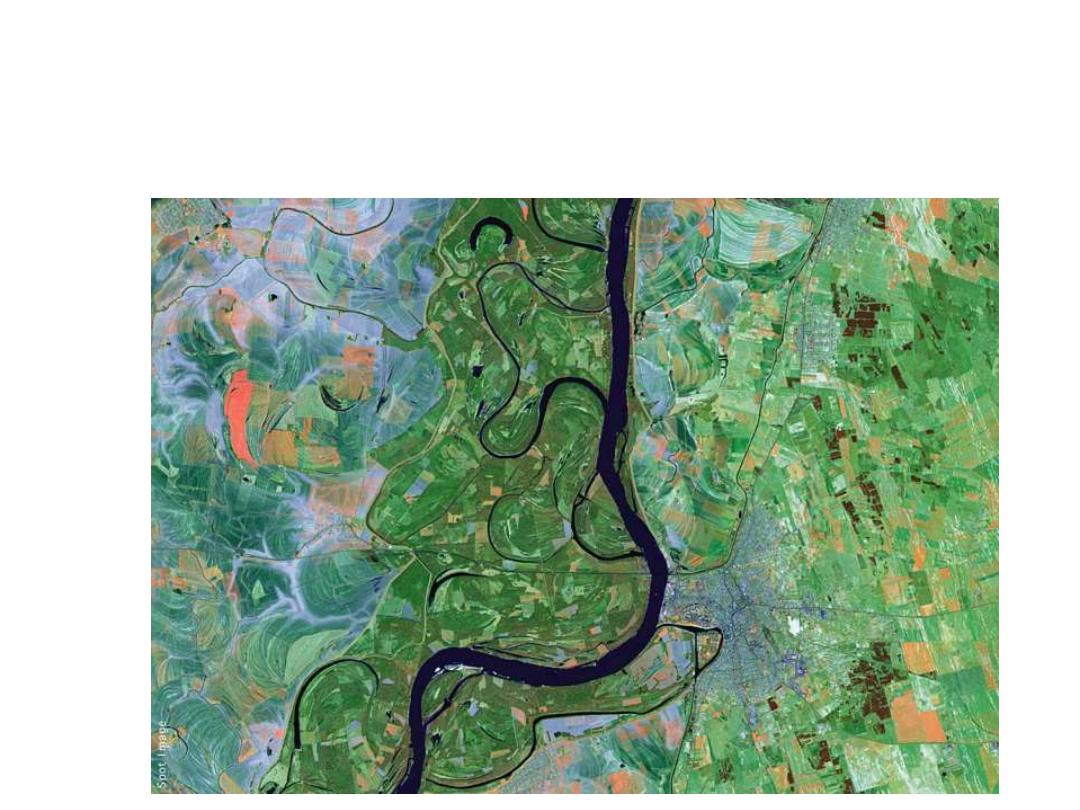
©2008 Austin Troy
SPOT
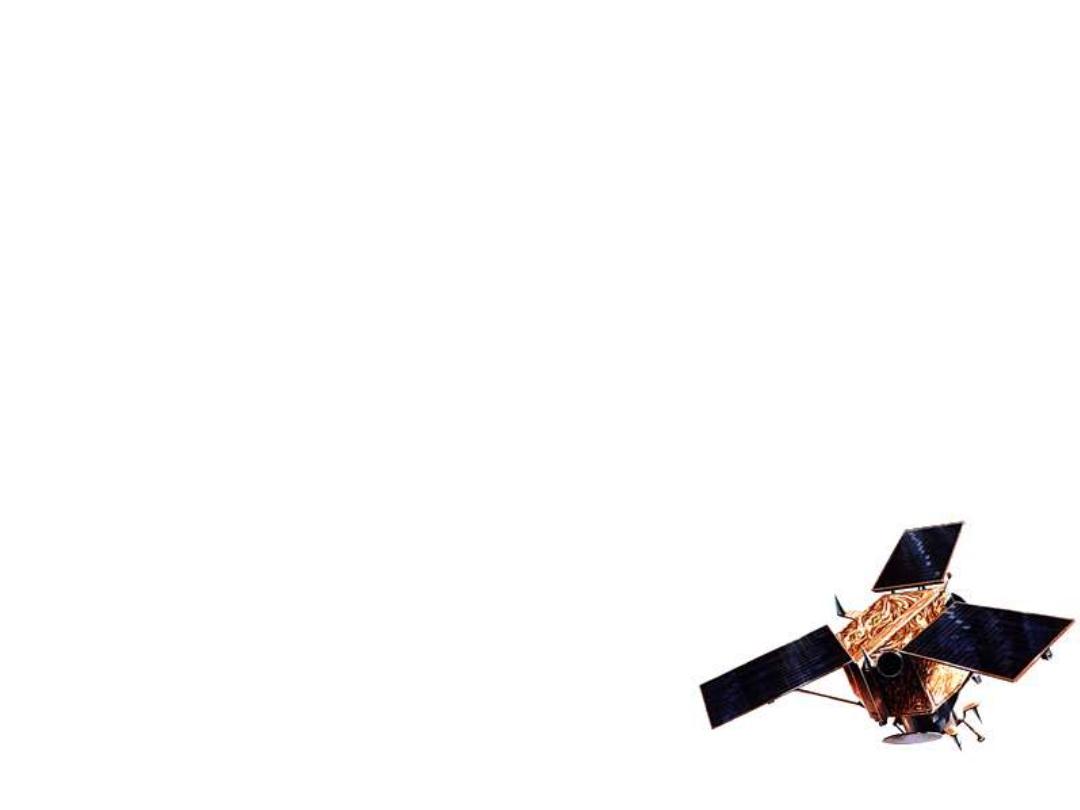
©2008 Austin Troy
IKONOS
•
Developed by Space Imaging, launched 1999
•
Has sun-synchronous orbit and crosses
equator at 10:30 AM
•
Highly maneuverable: can point at a new
target and stabilize itself in seconds, enabling it
to follow meandering features
•
The entire spacecraft moves, not just the
sensors

©2008 Austin Troy
IKONOS
•
Can collect data at angles of up to 45°from the
along track and across track axes: allows for side by
side and fore and aft stereoscopic imaging
•
At its nadir it has 11 km swath width
•
11 km by 11 km image size, but user specified strips
and mosaics can be ordered
•
Employs a linear array scanner

©2008 Austin Troy
IKONOS
•
Resolutions
– Panchromatic band (.45 to .90
m
m) at 1 m spatial resolution.
– Four multispectral bands at 4 m spatial resolution.
•
Blue (.45 to .52
m
m) green (.51 to .60
m
m) , red (.63 to .70
m
m),
near IR (.76 to .85
m
m)
– Radiometric resolution: 11 bits, or 2048 values.
– Temporal: Ground track repeats every 11 days.
–For a gallery of images, see:
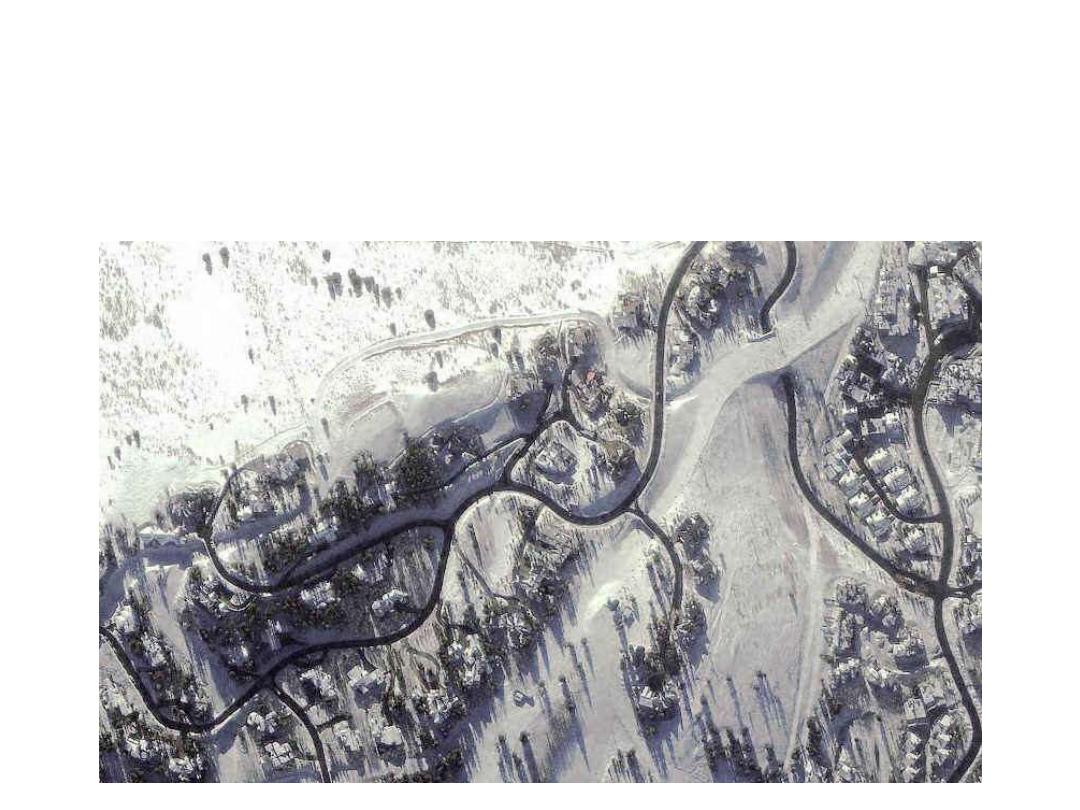
©2008 Austin Troy
IKONOS data
• Here is 1m IKONOS view of suburbs, near winter Olympics
Source: spaceimaging.com
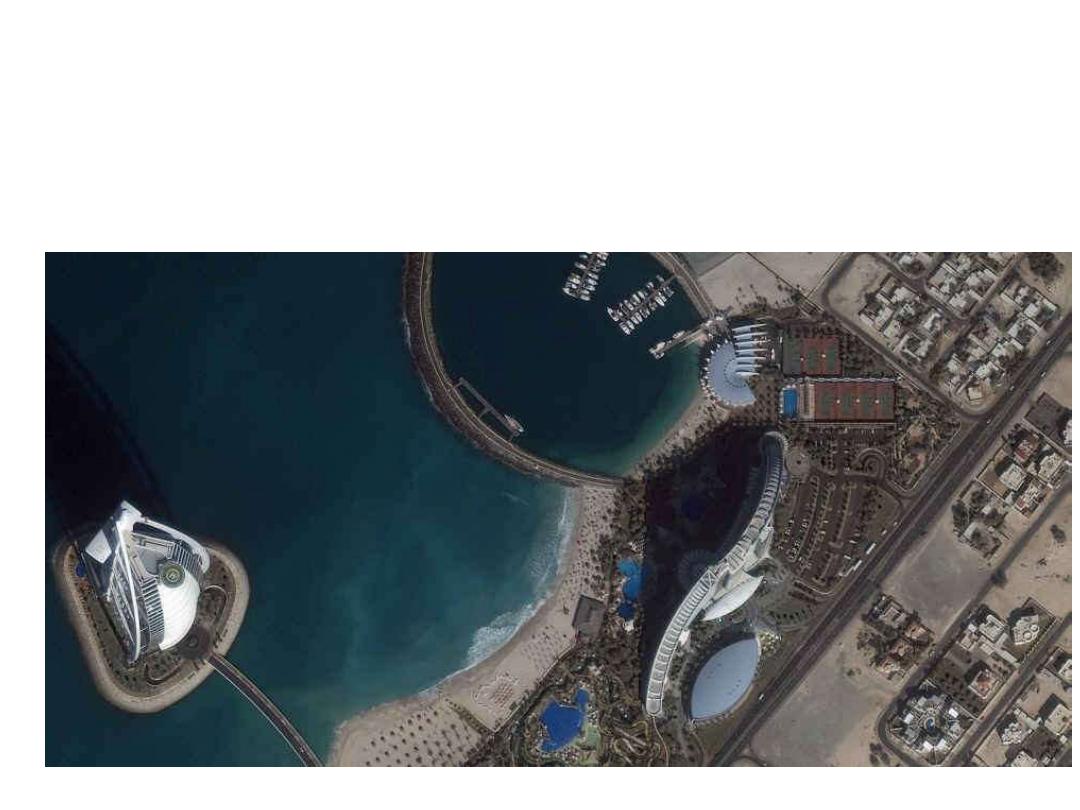
©2008 Austin Troy
IKONOS data
•1m IKONOS view of Dubai
Source: spaceimaging.com
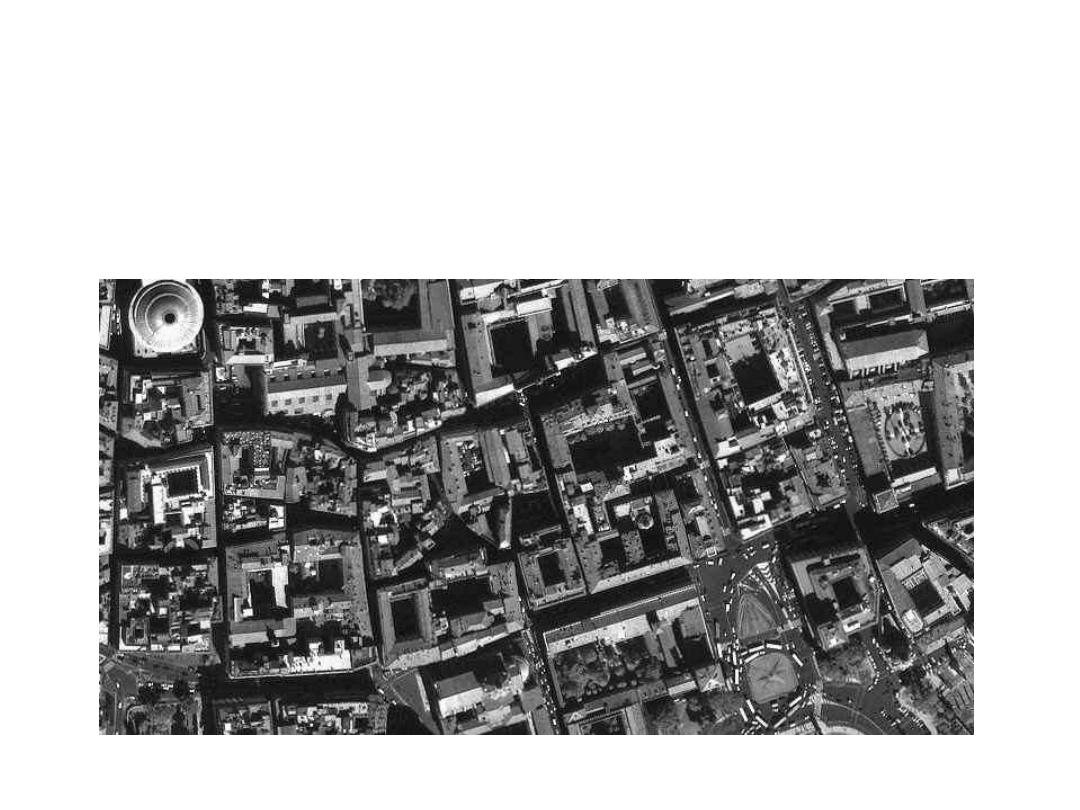
©2008 Austin Troy
IKONOS data
•1m IKONOS pan image of Rome
Source: spaceimaging.com
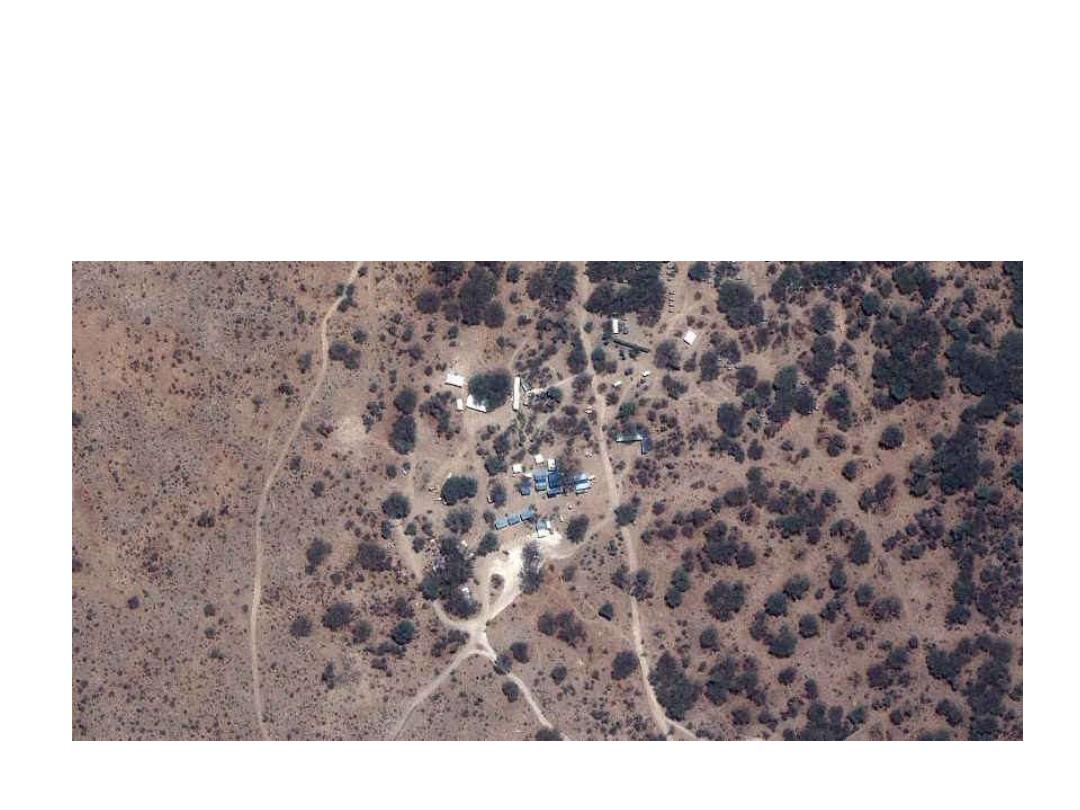
©2008 Austin Troy
IKONOS data
•1m image of “Survivor” camp in Africa
Source: spaceimaging.com

©2008 Austin Troy
Some other satellite platforms
• Quickbird
• IRS system: from India
• ERS: European remote sensing satellite
• Aster: a USGS sensor flying on Terra
Satellite
• AVHRR: radar
